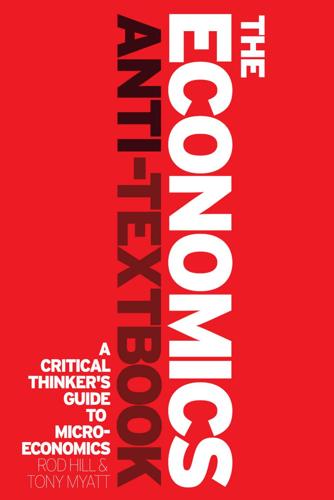
The Economics Anti-Textbook: A Critical Thinker's Guide to Microeconomics
by
Rod Hill
and
Anthony Myatt
Published 15 Mar 2010
This is a bit of a liberty, isn’t it? What if the proviso is related to the size of the minimum wage increase? For example, a doubling of the minimum wage would increase youth unemployment, but a 20 per cent increase would not. If that were the proviso then the economists who ‘agreed with provisos’ would hold ‘heretical’ beliefs. They are not singing from the same hymn book as the textbooks because (as we will see in the next chapter) the textbook prediction is that any increase in minimum wages would increase unemployment. Since we really don’t know what the provisos are, we simply shouldn’t group the two categories. Comparing the results of the three surveys, we see a clear trend: a decline in the percentage of those who generally agreed and a rise in the percentage of those who disagreed.
…
David Levine, editor of the Berkeley journal Industrial Relations, attributed this phenomenon to ‘author biases’, which he diplomatically defined as ‘conscious or unconscious biases in searching for a robust equation’ (2001: 161). What does searching for a ‘robust’ equation mean? The point is that testing 33 2 | Introducing economic models table 2.3 Percent in agreement with the proposition: ‘minimum wages increase unemployment among young and unskilled workers’ hypotheses is not an easy matter. For the minimum wage proposition, other things besides minimum wages affect the unemployment of young and unskilled workers, and these other influences need to be ‘controlled’ for, taken into account. For example, we need to control for the number of school leavers entering the labour market searching for jobs, and for the overall state of the economy, whether we are in a recession or boom.
…
. . . . . . . . . . . . . . 196 10 Trade and globalization without the rose-tinted glasses . . . . 219 11 Conclusion . . . . . . . . . . . . . . . . . . . . . . . . . . 243 Postscript: a case study on the global financial meltdown . . . 256 Notes | 264 Bibliography | 274 Glossary | 291 Index | 297 Tables and figures Tables 2.1 Labour’s productivity in England and Canada . . . . . . . . . . . . . . 28 2.2 Changes in world output . . . . . . . . . . . . . . . . . . . . . . . . 30 2.3 Percent in agreement with the proposition: ‘minimum wages increase unemployment among young and unskilled workers’ . . . . . . . . . . 33 3.1 Types of market structure . . . . . . . . . . . . . . . . . . . . . . . . 54 3.2 Tax incidence applications used in ten major North American textbooks . . . . . . . . . . . . . . . . . . . . . . . . . . . . . . . . 61 4.1 Mary’s benefit from eating pizzas . . . . . . . . . . . . . . . . . . . . 75 5.1 Inputs and output in the short run . . . . . . . . . . . . . . . . . . . 94 5.2 Costs in the short run . . . . . . . . . . . . . . . . . . . . . . . . . . 95 5.3 Downward-sloping demand and marginal revenue . . . . . . . . . . . 100 6.1 A pay-off matrix illustrating the prisoner’s dilemma . . . . . . . . . . . 129 6.2 Repeated plays when Esso plays ‘tit-for-tat’ . . . . . . . . . . . . . . . 130 7.1 Classification of types of goods . . . . . . . . . . . . . . . . . . . . . 153 7.2 Percentage changes in age-standardized cancer incidence rates . . . . . 163 8.1 Marginal cost of labour for a monopsonist . . . . . . . . . . . . . . . 175 9.1 Taxation as a percentage of GDP, OECD countries, 2005 . . . . . . . . . 197 9.2 Measures of income inequality . . . . . . . . . . . . . . . . . . . . . 199 9.3 Distribution of household net worth . . . . . . . . . . . . . . . . . . 200 9.4 Percentage of children in households with less than half of median household income, circa 2000 . . . . . . . . . . . . . . . . . . . . . 202 10.1 International trade, 2007 . . . . . . . . . . . . . . . . . . . . . . . . 220 10.2 Estimates of the stock of foreign direct investment, by sector, 2006 . . . 239 11.1 Conventional economics and the blank cells of Akerlof and Shiller . . . 244 11.2 Conventional textbook economics and the blank cells of Robert Prasch . . . . . . . . . . . . . . . . . . . . . . . . . . . . . . . . . 250 1.1 2.1 2.2 2.3 3.1 3.2 3.3 3.4 3.5 Figures Marginal thinking . . . . . . . . . . . . . . . . . . . . . . . . . . . .

Basic Economics
by
Thomas Sowell
Published 1 Jan 2000
However, the Swiss cabinet still rejected the proposed minimum wage law in January 2013.{340} Its unemployment rate at that time was 3.1 percent.{341} Singapore likewise has no minimum wage law and its unemployment rate has likewise been 2.1 percent.{342} Back in 1991, when Hong Kong was still a British colony, it too had no minimum wage law, and its unemployment rate was under 2 percent.{343} In the United States, during the Coolidge administration—the last administration before there was any federal minimum wage law—the annual unemployment rate got as low as 1.8 percent.{344} The explicit minimum wage rate understates the labor costs imposed by European governments, which also mandate various employer contributions to pension plans and health benefits, among other things.
…
However, the Swiss cabinet still rejected the proposed minimum wage law in January 2013.{340} Its unemployment rate at that time was 3.1 percent.{341} Singapore likewise has no minimum wage law and its unemployment rate has likewise been 2.1 percent.{342} Back in 1991, when Hong Kong was still a British colony, it too had no minimum wage law, and its unemployment rate was under 2 percent.{343} In the United States, during the Coolidge administration—the last administration before there was any federal minimum wage law—the annual unemployment rate got as low as 1.8 percent.{344} The explicit minimum wage rate understates the labor costs imposed by European governments, which also mandate various employer contributions to pension plans and health benefits, among other things. Higher costs in the form of mandated benefits have the same economic effect as higher costs in the form of minimum wage laws. Europe’s unemployment rates shot up when such government-mandated benefits, to be paid for by employers, grew sharply during the 1980s and 1990s. In Germany, such benefits accounted for half of the average labor cost per hour. By comparison, such benefits accounted for less than one-fourth the average labor costs per hour in Japan and the United States.{345} Average hourly compensation of manufacturing employees in the European Union countries in general is higher than in the United States or Japan.{346} So is unemployment.
…
Over this five-year period, three Canadian provinces had unemployment rates in excess of 10 percent, with a high of 16.9 percent in Newfoundland, but none of the 50 American states averaged unemployment rates in double digits over that same five-year period.{347} A belated recognition of the connection between minimum wage laws and unemployment by government officials has caused some countries to allow their real minimum wage levels to be eroded by inflation, avoiding the political risks of trying to repeal these laws explicitly, when so many voters think of these laws as being beneficial to workers. Such laws are in fact beneficial to those workers who continue to be employed—those who are on the inside looking out, but at the expense of the unemployed who are on the outside looking in.
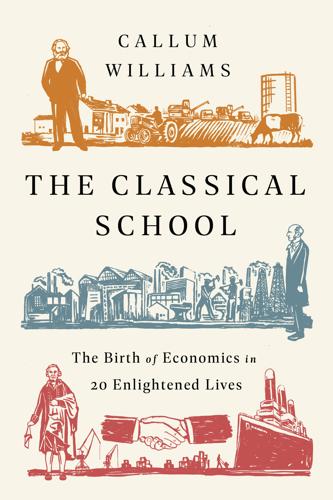
The Classical School
by
Callum Williams
Published 19 May 2020
Cantillon also had thoughts on what economists refer to as “ceteris paribus”. In order to determine how one thing affects another, economists often simplify the world. Imagine that an economist is thinking about the impact of a higher minimum wage on unemployment. Many things determine the rate of unemployment, including the skills of the population and overall economic growth. Economists, however, want to focus on just one causal relationship: the effect of the minimum wage on unemployment. Therefore, they will assess the impact “all else equal” (ceteris paribus).5 Imagine, they say, that economic growth is what it is today, that the skill level of the population does not change, and that there are no natural disasters.
…
Joseph Schumpeter found Marshall’s “preaching of mid-Victorian morality, seasoned by Benthamism… irritating”. 11. Even today, economists fiercely battle over theories that outsiders might have expected would have been long ago settled. There is no established consensus, for instance, on the degree to which minimum wages cause unemployment. Researchers also fundamentally disagree on what are the most important determinants of changes in house prices. PublicAffairs is a publishing house founded in 1997. It is a tribute to the standards, values, and flair of three persons who have served as mentors to countless reporters, writers, editors, and book people of all kinds, including me.
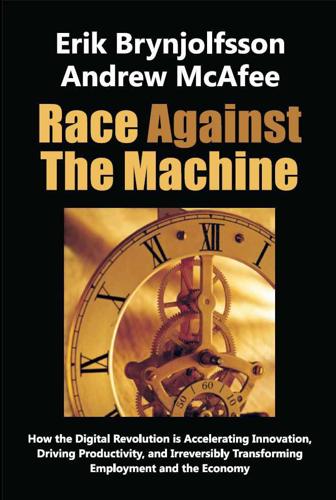
Race Against the Machine: How the Digital Revolution Is Accelerating Innovation, Driving Productivity, and Irreversibly Transforming Employment and the Economy
by
Erik Brynjolfsson
Published 23 Jan 2012
And indeed, the wages of unskilled workers have trended downward for over 30 years, at least in the United States. We also now understand that technological unemployment can occur even when wages are still well above subsistence if there are downward rigidities that prevent them from falling as quickly as advances in technology reduce the costs of automation. Minimum wage laws, unemployment insurance, health benefits, prevailing wage laws, and long-term contracts—not to mention custom and psychology—make it difficult to rapidly reduce wages.3 Furthermore, employers will often find wage cuts damaging to morale. As the efficiency wage literature notes, such cuts can be demotivating to employees and cause companies to lose their best people.

The Raging 2020s: Companies, Countries, People - and the Fight for Our Future
by
Alec Ross
Published 13 Sep 2021
This is true of both the police unions and the teachers unions, and it demeans the work of the good teachers and the good police officers who make up the vast majority of the membership. The losers in this are students and citizens, and the costs to society are substantial. It does not have to be this way. It isn’t elsewhere. When they were at their best, unions helped win workers a minimum wage, unemployment insurance, the forty-hour workweek, sick leave, antidiscrimination laws, child labor laws, and pensions. We can even thank them for weekends. The very basis for the European and American middle classes emerged out of the work of the labor movement. But what they delivered, they delivered in the too-distant past.
…
Equity-based compensation for workers can also be a partial antidote to stock buybacks, the dumbest and least effective attribute of shareholder capitalism. Better the stock live inside the portfolios of workers than reside inanimately on corporate balance sheets. Labor movements played an indispensable role in writing the 20th-century social contract. Again, the list runs from the establishment of a minimum wage to unemployment insurance, the forty-hour workweek, sick leave, antidiscrimination laws, child labor laws, pensions, and even weekends off. They should play an equally important role in rewriting that contract for the 21st century. In the United States, United Kingdom, and Mediterranean Europe, the vast majority of the labor unions are past their prime.

The Alternative: How to Build a Just Economy
by
Nick Romeo
Published 15 Jan 2024
If there’s something that companies don’t do voluntarily, then ipso facto it is not a good idea. Economists Alan Krueger and David Card, joint recipients of the 2021 Nobel Memorial Prize in Economic Sciences, had already challenged in a 1993 paper the conventional view that raising the minimum wage increases unemployment.32 After New Jersey’s minimum wage rose in 1992 from $4.25 to $5.05 per hour, Card and Krueger studied 410 fast-food restaurants in New Jersey and Pennsylvania, where the minimum wage remained at $4.25 per hour. Their research undermined the notion that a rise in minimum wage reduces employment.
…
“If the price of something rises, people buy less of it—including labor. Thus governmental interferences such as minimum-wage laws lower the quantity of labor demanded,” the economist Richard Vedder intoned in the Wall Street Journal.16 The reality is more contingent and complex. Large meta-analyses of empirical studies on how minimum-wage increases affect unemployment are mixed—some find that they do cause unemployment to rise, while others don’t.17 Economists polled on the subject are also split.18 While some evidence supports the idea that a higher cost of labor decreases demand for it, several complicating factors undermine this effect. Better-paid workers are often more productive and quit less frequently, saving employers money.
…
Many businesses, in turn, can easily absorb the cost of higher wages without a significant impact on their revenue. These dynamics can make it possible to raise wages without increasing unemployment. Like an increase to the minimum wage, a nationwide Job Guarantee would pressure low-quality employers to improve wages and conditions. More fundamentally, even if a higher minimum wage or a job guarantee did cause unemployment to rise, training and access to a job guarantee could help anyone seeking work. Private-sector employers could also have the option of receiving subsidies, as in the Austrian program. The economist Pavlina Tcherneva, an insightful supporter of job guarantees, notes that the effective minimum wage for workers who can’t find employment is zero.
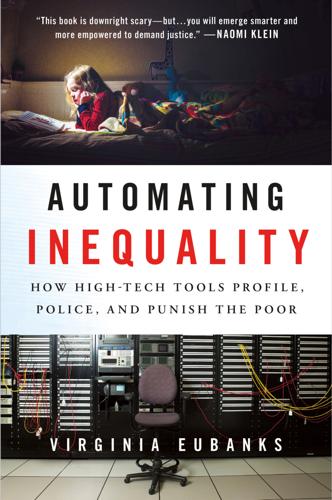
Automating Inequality
by
Virginia Eubanks
Most importantly, in response to threats that southern states would not support the Social Security Act, both agricultural and domestic workers were explicitly excluded from its employment protections. The “southern compromise” left the great majority of African American workers—and a not-insignificant number of poor white tenant farmers, sharecroppers, and domestics—with no minimum wage, unemployment protection, old-age insurance, or right to collective bargaining. New Deal programs also enshrined the male breadwinner as the primary vehicle for economic support of women and families. Federal protections were tied to wages, union membership, unemployment insurance, and pensions. But by incentivizing long-term wage-earning and full-time, year-round work, the protections privileged men’s employment patterns over women’s.
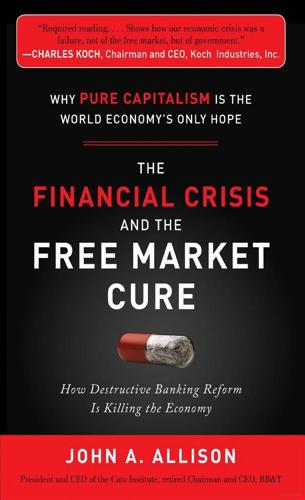
The Financial Crisis and the Free Market Cure: Why Pure Capitalism Is the World Economy's Only Hope
by
John A. Allison
Published 20 Sep 2012
Unfortunately, many entry-level and unskilled workers cannot create $9 per hour in value, so they are not employable. Unbelievably, there are economists who argue that the minimum wage does not create unemployment. We must wonder about their motivation. The law of supply and demand is a long-proven law; in other words, it is not negotiable. Also, if the minimum wage does not create unemployment, why not set it at $100 per hour, or maybe $200 per hour? The minimum-wage laws are the primary cause of unnecessary unemployment. The typical victims of the minimum-wage laws are the individuals that the laws are supposed to help by guaranteeing that these workers get a “living wage.”
…
From immediately before the financial crisis until today, the minimum wage has been raised from $5.15 per hour to $7.25 per hour, or 41 percent. The prices for practically all other goods and services have either fallen or risen only a little. So in the face of a severe economic correction, the government has raised the price of labor far above the market-clearing price. The minimum-wage laws are the primary cause of the high unemployment levels in the United States today. In a free market, labor rates (wages) for many jobs would have fallen just as prices for other goods and services have fallen. Many jobs that have left the United States for China would have stayed in the United States. Instead of laying off employees, many businesses would have cut wages and kept their employees.
…
(A number of economists are estimating that the effective unemployment rate may be as high as 16 to 18 percent, as many individuals have simply dropped out of the workforce and are not included in government statistics.) By the way, the Federal Reserve understands that the excessive minimum-wage rates are a primary cause of unemployment. Bernanke’s drive to create inflation is designed to lower real minimum-wage rates by decreasing the value of the dollar while the minimum wage is not raised. For example, 3 percent inflation compounded over five years will reduce the real minimum-wage rate by almost 16 percent.

Essential: How the Pandemic Transformed the Long Fight for Worker Justice
by
Jamie K. McCallum
Published 15 Nov 2022
Both inherited a crisis, both showed surprisingly liberal policy stances early in their tenure, and both spoke up on behalf of workers. The similarities stop there unless—and I couldn’t be happier for history to prove me wrong here—Biden can convince even his own party to make lasting changes that will benefit workers. The New Deal, once the vital center of American liberalism, offered working people guarantees of a minimum wage, unemployment compensation, and Social Security, as well as the right to organize unions and bargain collectively. A lesser-known fact is that domestic and agricultural workers, who were predominantly Black and female, were excluded from New Deal protections. The 1938 Fair Labor Standards Act (FLSA), which set the first maximum-hour limits and established the minimum wage, and the 1935 National Labor Relations Act (a.k.a. the Wagner Act), which guaranteed collective bargaining rights, did not extend to most low-wage care workers.

Economics Rules: The Rights and Wrongs of the Dismal Science
by
Dani Rodrik
Published 12 Oct 2015
A large federal budget deficit has an adverse effect on the economy. (83%) 8. A minimum wage increases unemployment among young and unskilled workers. (79%) Unless you skipped the previous chapters, the degree of consensus on these propositions should surprise you. For at least four of the eight, we have already seen models that contradict them. Rent controls (ceilings on what landlords can charge) do not necessarily restrict the supply of housing if landlords behave monopolistically, trade restrictions do not necessarily reduce efficiency, fiscal stimulus does not necessarily work, and minimum wages do not necessarily raise unemployment. In all of these cases, there are models with imperfect competition, imperfect markets, or imperfect information where the reverse outcome prevails.
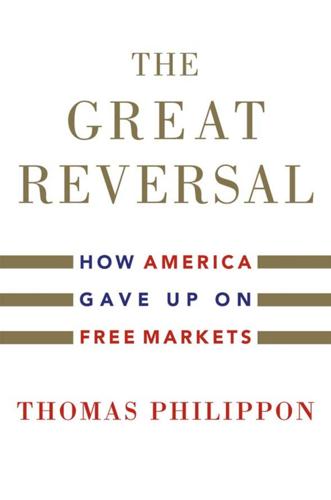
The Great Reversal: How America Gave Up on Free Markets
by
Thomas Philippon
Published 29 Oct 2019
Worker flows have declined since the 1990s.a In other words, people are less likely to quit their jobs now than in the past. When I first saw these numbers, I was reminded of a discussion I had with my own grandfather about being a worker in France in the 1950s and 1960s. Employment protections—in the form of minimum wages, unemployment insurance, severance pay, long-term contracts, and the ability to sue one’s employer for wrongful termination—were much lower than today. Overall, it certainly looked like firms held more sway over their workers then. I asked him if he felt the pressure as a worker, and he looked at me as if he was surprised by the question.
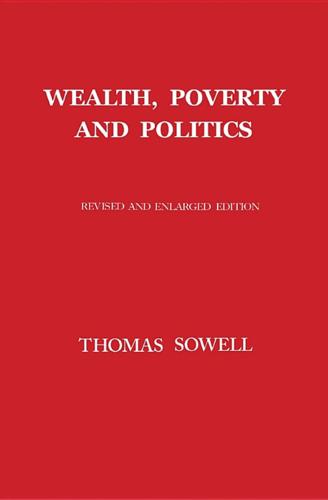
Wealth, Poverty and Politics
by
Thomas Sowell
Published 31 Aug 2015
Another complication is that people working for minimum wages are a small fraction of the people working, so that what happens to the employment of minimum wage workers can be lost in statistics about the total employment in an industry, due to all sorts of other fluctuations in the employment of a larger number of other workers. But if, instead of surveying surviving firms after a minimum wage increase, data are collected on unemployment rates among particular groups of inexperienced and low-skilled workers, such as black teenagers, a more accurate picture of the effects of minimum wages on unemployment can be obtained. d About ten percent of the black population in America had been free before the Civil War, and these “free persons of color” had a head start that made their descendants so much more experienced and more educated that they remained the elite of the black population on into the middle of the twentieth century.
…
Ten years after passage of the federal minimum wage law in the United States— the Fair Labor Standards Act of 1938— the wartime inflation during the intervening decade had so raised prices and wages that the minimum wage specified in that law was below what inexperienced and unskilled workers were already being paid, so that by 1948 it was in most places the same as if there were no minimum wage law. This allows us to see what unemployment was like for inexperienced youths at a time of a virtual absence of a minimum wage law, and then later in its presence, as the minimum wage rate was successively raised over the years to catch up, and then keep up, with inflation. The unemployment rate among black 16- and 17-year-old males in 1948 was just under 10 percent.
…
From 1995 on, the 16-17-year-old male category was consolidated into a new 16-19-year-old male category. Unemployment for this new category ranged from a low of 23.8 percent to a high of 52.2 percent from 1995 through 2009.7 Despite complications in trying to determine empirically the effects of minimum wage laws on the unemployment rates of black teenage males,c when their unemployment rates under minimum wage rates that keep going up, along with inflation, have for more than half a century been some multiple of what their unemployment rate was when inflation rendered the official minimum wage rate ineffective, the results are too blatant to be ignored or evaded.

System Error: Where Big Tech Went Wrong and How We Can Reboot
by
Rob Reich
,
Mehran Sahami
and
Jeremy M. Weinstein
Published 6 Sep 2021
One of the recent battlefronts in tech companies’ push to influence regulation comes from California’s effort to reclassify gig economy workers, such as Uber and Lyft drivers and delivery people for companies such as DoorDash, as employees rather than contractors of the firms they work for. In 2019, the California legislature passed Assembly Bill 5 (AB 5), with the aim of reclassifying thousands of independent contractors as employees, thereby guaranteeing them numerous benefits such as minimum wage, unemployment insurance, and sick leave. The bill was a textbook case of government seeking to contain a negative externality created by a profit-seeking company. Assemblywoman Lorena Gonzalez, an author of the bill, described her motivation: “As lawmakers, we will not in good conscience allow free-riding businesses to continue to pass their own business costs onto taxpayers and workers.”
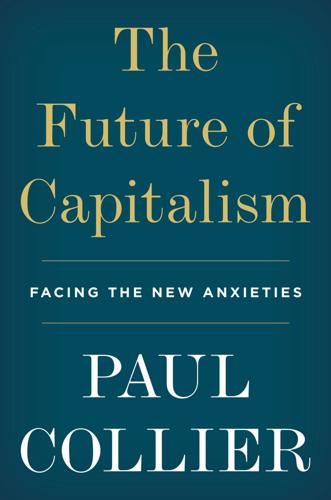
The Future of Capitalism: Facing the New Anxieties
by
Paul Collier
Published 4 Dec 2018
But I am writing this section in Singapore, and from my desk I have a panoramic view of an outstandingly prosperous city that has been achieved by public planning. When I first visited the city in 1980 it had just raised the minimum wage in order to drive out what the government recognized was a doomed sector – garments. The strategy met with scathing critiques from the market fundamentalists: minimum wages would just create high unemployment. In America and Europe, the government as co-ordinator indeed has an embarrassing history of politically skewed interventions, but East Asia is a valuable corrective: co-ordination can work. Singapore’s founder, Lee Kwan Yew, also understood both the economics and the ethics of agglomeration.
…
Meanwhile, my award-winning actor nephew, working in a sector saturated with job-seekers, looks forward to a lifetime of transience. In rethinking employment rights, ideology is not going to help: while the ideologues of the left abhor a market for labour, those of the right sanctify it. The most common free-market critique is that minimum wages cause unemployment. Unemployment is the most salient indication that something is amiss, but it is not always the most important. A labour market has two distinct functions. The one that matters for unemployment is to pair up job-seekers with a particular skill with the jobs that firms create for those skills: what is going on is matching.
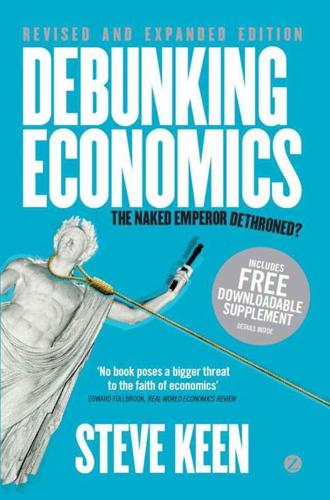
Debunking Economics - Revised, Expanded and Integrated Edition: The Naked Emperor Dethroned?
by
Steve Keen
Published 21 Sep 2011
This argument, which strictly speaking applies to labor in the aggregate, is extended by analogy to a disaggregated level in order to explain why some workers get much higher wages than others. 6.4 Supply and demand determine the equilibrium wage in the labor market At a policy level, this model is used to emphasize the futility of minimum wage legislation, demand management policies, and any other attempts to interfere with the free working of the market mechanism in this most political of markets. If a government attempts to improve workers’ incomes by legislating a minimum wage, then this will result in unemployment, because it will increase the number of hours workers are willing to work, while reducing the demand from employers because the wage will now exceed the marginal product of labor. The gap between the increased hours offered and the reduced hours demand represents involuntary unemployment at this artificially high wage level. 6.5 Minimum wage laws cause unemployment Demand management measures – trying to boost aggregate demand to increase employment – will also fail, because they can’t alter the marginal physical product of labor, which can only be done by raising the productivity of labor on the supply side.
…
A catalogue record for this book is available from the British Library Library of Congress Cataloging in Publication Data available eISBN 9781780322209 CONTENTS Tables, figures and boxes Preface to the second edition Preface to the first edition 1 Predicting the ‘unpredictable’ 2 No more Mr Nice Guy Part 1 Foundations: the logical flaws in the key concepts of conventional economics 3 The calculus of hedonism 4 Size does matter 5 The price of everything and the value of nothing 6 To each according to his contribution Part 2 Complexities: issues omitted from standard courses that should be part of an education in economics 7 The holy war over capital 8 There is madness in their method 9 Let’s do the Time Warp again 10 Why they didn’t see it coming 11 The price is not right 12 Misunderstanding the Great Depression and the Great Recession Part 3 Alternatives: different ways to think about economics 13 Why I did see ‘It’ coming 14 A monetary model of capitalism 15 Why stock markets crash 16 Don’t shoot me, I’m only the piano 17 Nothing to lose but their minds 18 There are alternatives Bibliography Index TABLES, FIGURES AND BOXES Tables 2.1 Anticipations of the housing crisis and recession 3.1 ‘Utils’ and change in utils from consuming bananas 3.2 Utils arising from the consumption of two commodities 3.3 The commodities in Sippel’s ‘Revealed Preference’ experiment 4.1 Demand schedule for a hypothetical monopoly 4.2 Costs for a hypothetical monopoly 4.3 Sales and costs determine the level of output that maximizes profit 4.4 Cost and revenue for a ‘perfectly competitive’ industry identical in scale to hypothetical monopoly 5.1 Input and output data for a hypothetical firm 5.2 Cost drawings for the survey by Eiteman and Guthrie 5.3 Empirical research on the nature of cost curves 7.1 Sraffa’s hypothetical subsistence economy 7.2 Production with a surplus 7.3 Relationship between maximum and actual rate of profit and the wage share of surplus 7.4 The impact of the rate of profit on the measurement of capital 10.1 Anderson’s ranking of sciences 12.1 The alleged Money Multiplier process 13.1 A hypothetical example of the impact of decelerating debt on aggregate demand 13.2 The actual impact of decelerating debt on aggregate demand 14.1 A pure credit economy with paper money 14.2 The dynamics of a pure credit economy with no growth 14.3 Net incomes 14.4 A growing pure credit economy with electronic money 15.1 Von Neumann’s procedure for working out a numerical value for utility 15.2 The Allais ‘Paradox’ 15.3 The Allais ‘Paradox’ Part 2 16.1 The solvability of mathematical models 17.1 Marx’s unadjusted value creation table, with the rate of profit dependent upon the variable-to-constant ratio in each sector 17.2 Marx’s profit distribution table, with the rate of profit now uniform across sectors 17.3 Steedman’s hypothetical economy 17.4 Steedman’s physical table in Marx’s value terms 17.5 Steedman’s prices table in Marx’s terms 17.6 Profit rate and prices calculated directly from output/wage data 17.7 Marx’s example where the use-value of machinery exceeds its depreciation Figures 2.1 US inflation and unemployment from 1955 2.2 Bernanke doubles base money in five months 2.3 Private debt peaked at 1.7 times the 1930 level in 2009 3.1 Rising total utils and falling marginal utils from consuming one commodity 3.2 Total utils from the consumption of two commodities; 3.3 Total ‘utils’ represented as a ‘utility hill’ 3.4 The contours of the ‘utility hill’ 3.5 Indifference curves: the contours of the ‘utility hill’ shown in two dimensions 3.6 A rational consumer’s indifference map 3.7 Indifference curves, the budget constraint, and consumption 3.8 Deriving the demand curve 3.9 Upward-sloping demand curve 3.10 Separating out the substitution effect from the income effect 3.11 Engel curves show how spending patterns change with increases in income 3.12 A valid market demand curve 3.13 Straight-line Engel ‘curves’ 3.14 Economic theory cannot rule out the possibility that a market demand curve may have a shape like this, rather than a smooth, downward-sloping curve 4.1 Leijonhufvud’s ‘Totems’ of the Econ tribe 4.2 Stigler’s proof that the horizontal firm demand curve is a fallacy 4.3 Profit maximization for a monopolist: marginal cost equals marginal revenue, while price exceeds marginal cost 4.4 Profit maximization for a perfectly competitive firm: marginal cost equals marginal revenue, which also equals price 4.5 A supply curve can be derived for a competitive firm, but not for a monopoly 4.6 A competitive industry produces a higher output at a lower cost than a monopoly 4.7 The standard ‘supply and demand’ explanation for price determination is valid only in perfect competition 4.8 Double the size, double the costs, but four times the output 4.9 Predictions of the models and results at the market level 4.10 Output behavior of three randomly selected firms 4.11 Profit outcomes for three randomly selected firms 4.12 Output levels for between 1- and 100-firm industries 5.1 Product per additional worker falls as the number of workers hired rises 5.2 Swap the axes to graph labor input against quantity 5.3 Multiply labor input by the wage to convert Y-axis into monetary terms, and add the sales revenue 5.4 Maximum profit occurs where the gap between total cost and total revenue is at a maximum 5.5 Deriving marginal cost from total cost 5.6 The whole caboodle: average and marginal costs, and marginal revenue 5.7 The upward-sloping supply curve is derived by aggregating the marginal cost curves of numerous competitive firms 5.8 Economic theory doesn’t work if Sraffa is right 5.9 Multiple demand curves with a broad definition of an industry 5.10 A farmer who behaved as economists advise would forgo the output shown in the gap between the two curves 5.11 Capacity utilization over time in the USA 5.12 Capacity utilization and employment move together 5.13 Costs determine price and demand determines quantity 5.14 A graphical representation of Sraffa’s (1926) preferred model of the normal firm 5.15 The economic theory of income distribution argues that the wage equals the marginal product of labor 5.16 Economics has no explanation of wage determination or anything else with constant returns 5.17 Varian’s drawing of cost curves in his ‘advanced’ microeconomics textbook 6.1 The demand for labor curve is the marginal revenue product of labor 6.2 The individual’s income–leisure trade-off determines how many hours of labor he supplies 6.3 An upward-sloping individual labor supply curve 6.4 Supply and demand determine the equilibrium wage in the labor market 6.5 Minimum wage laws cause unemployment 6.6 Demand management policies can’t shift the supply of or demand for labor 6.7 Indifference curves that result in less work as the wage rises 6.8 Labor supply falls as the wage rises 6.9 An individual labor supply curve derived from extreme and midrange wage levels 6.10 An unstable labor market stabilized by minimum wage legislation 6.11 Interdependence of labor supply and demand via the income distributional effects of wage changes 7.1 The standard economic ‘circular flow’ diagram 7.2 The rate of profit equals the marginal product of capital 7.3 Supply and demand determine the rate of profit 7.4 The wage/profit frontier measured using the standard commodity 9.1 Standard neoclassical comparative statics 9.2 The time path of one variable in the Lorenz model 9.3 Structure behind the chaos 9.4 Sensitive dependence on initial conditions 9.5 Unstable equilibria 9.6 Cycles in employment and income shares 9.7 A closed loop in employment and wages share of output 9.8 Phillips’s functional flow block diagram model of the economy 9.9 The component of Phillips’s Figure 12 including the role of expectations in price setting 9.10 Phillips’s hand drawing of the output–price-change relationship 9.11 A modern flow-chart simulation program generating cycles, not equilibrium 9.12 Phillips’s empirically derived unemployment–money-wage-change relation 10.1 Hicks’s model of Keynes 10.2 Derivation of the downward-sloping IS curve 10.3 Derivation of the upward-sloping LM curve 10.4 ‘Reconciling’ Keynes with ‘the Classics’ 10.5 Unemployment–inflation data in the USA, 1960–70 10.6 Unemployment–inflation data in the USA, 1950–72 10.7 Unemployment–inflation data in the USA, 1960–80 10.8 The hog cycle 11.1 Supply and demand in the market for money 11.2 The capital market line 11.3 Investor preferences and the investment opportunity cloud 11.4 Multiple investors (with identical expectations) 11.5 Flattening the IOC 11.6 How the EMH imagines that investors behave 11.7 How speculators actually behave 12.1 Inflation and base money in the 1920s 12.2 Inflation and base money in the post-war period 12.3 Bernanke’s massive injection of base money in QE1 12.4 Change in M0 and unemployment, 1920–40 12.5 Change in M1 and unemployment, 1920–40 12.6 Change in M0 and M1, 1920–40 12.7 M0–M1 correlation during the Roaring Twenties 12.8 M0–M1 correlation during the Great Depression 12.9 Bernanke’s ‘quantitative easing’ in historical perspective 12.10 The volume of base money in Bernanke’s ‘quantitative easing’ in historical perspective 12.11 Change in M1 and inflation before and during the Great Recession 12.12 The money supply goes haywire 12.13 Lindsey, Orphanides, Rasche 2005, p. 213 12.14 The empirical ‘Money Multiplier’, 1920–40 12.15 The empirical ‘Money Multiplier’, 1960–2012 12.16 The disconnect between private and fiat money during the Great Recession 13.1 Goodwin’s growth cycle model 13.2 My 1995 Minsky model 13.3 The vortex of debt in my 1995 Minsky model 13.4 Cyclical stability with a counter-cyclical government sector 13.5 Australia’s private debt-to-GDP ratio, 1975–2005 13.6 US private debt to GDP, 1955–2005 13.7 Aggregate demand in the USA, 1965–2015 13.8 US private debt 13.9 The change in debt collapses as the Great Recession begins 13.10 The Dow Jones nosedives 13.11 The correlation of debt-financed demand and unemployment 13.12 The housing bubble bursts 13.13 The Credit Impulse and change in employment 13.14 Correlation of Credit Impulse and change in employment and GDP 13.15 Relatively constant growth in debt 13.16 The biggest collapse in the Credit Impulse ever recorded 13.17 Growing level of debt-financed demand as debt grew faster than GDP 13.18 The two great debt bubbles 13.19 Change in nominal GDP growth then and now 13.20 Real GDP growth then and now 13.21 Inflation then and now 13.22 Unemployment then and now 13.23 Nominal private debt then and now 13.24 Real debt then and now 13.25 Debt to GDP then and now 13.26 Real debt growth then and now 13.27 The collapse of debt-financed demand then and now 13.28 Debt by sector – business debt then, household debt now 13.29 The Credit Impulse then and now 13.30 Debt-financed demand and unemployment, 1920–40 13.31 Debt-financed demand and unemployment, 1990–2011 13.32 Credit Impulse and change in unemployment, 1920–40 13.33 Credit Impulse and change in unemployment, 1990–2010 13.34 The Credit Impulse leads change in unemployment 14.1 The neoclassical model of exchange as barter 14.2 The nature of exchange in the real world 14.3 A nineteenth-century private banknote 14.4 Bank accounts 14.5 A credit crunch causes a fall in deposits and a rise in reserves in the bank’s vault 14.6 A bank bailout’s impact on loans 14.7 A bank bailout’s impact on incomes 14.8 A bank bailout’s impact on bank income 14.9 Bank income grows if debt grows more rapidly 14.10 Unemployment is better with a debtor bailout 14.11 Loans grow more with a debtor bailout 14.12 Profits do better with a debtor bailout 14.13 Bank income does better with a bank bailout 14.14 Modeling the Great Moderation and the Great Recession – inflation, unemployment and debt 14.15 The Great Moderation and the Great Recession – actual inflation, unemployment and debt 14.16 Modeling the Great Moderation and the Great Recession – output 14.17 Income distribution – workers pay for the debt 14.18 Actual income distribution matches the model 14.19 Debt and GDP in the model 14.20 Debt and GDP during the Great Depression 15.1 Lemming population as a constant subject to exogenous shocks 15.2 Lemming population as a variable with unstable dynamics 17.1 A graphical representation of Marx’s dialectics Boxes 10.1 The Taylor Rule 13.1 Definitions of unemployment PREFACE TO THE SECOND EDITION Debunking Economics was far from the first book to argue that neoclassical economics was fundamentally unsound.
…
This imperfection in the theory – the possibility of backward-bending labor supply curves – is sometimes pointed out to students of economics, but then glossed over with the assumption that, in general, labor supply curves will be upward sloping. But there is no theoretical – or empirical – justification for this assumption. This strong assumption would be of little consequence if economists didn’t derive such strong conclusions from their model of the labor market. Declarations that minimum wage legislation is ineffective and causes unemployment, or that demand management policies can’t alter the rate of unemployment, are hardly insignificant pronouncements. Their truth is dependent in part on the supply curve for labor being upward sloping. 6.10 An unstable labor market stabilized by minimum wage legislation For example, if the aggregate demand and supply curves for labor both slope downwards, then the ‘equilibrium’ of the two could be unstable: falling supply could be met by falling demand, resulting in runaway unemployment.
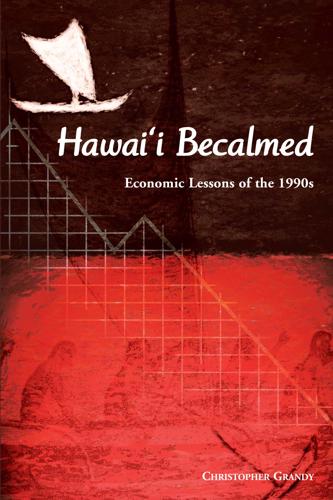
Hawai'I Becalmed: Economic Lessons of the 1990s
by
Christopher Grandy
Published 30 Sep 2002
While Card and Krueger question some of the data used in the replication, they conclude that there have been no employment effects of the New Jersey minimum wage increase.15 Even more recent work on the minimum wage raises the intriguing possibility that the disemployment effects may not appear in lost jobs but in the form of jobs not being created in the first place.16 That is, raising the minimum wage may increase the equilibrium level of unemployment in an economy. An increase in the minimum wage raises the employer’s cost of hiring. Even if the higher cost is not sufficient to lay off existing workers, it may be enough to discourage the addition of more workers. Over time, this effect could lead to an upward drift in the unemployment rate. Preliminary evidence suggests that a 10% increase in the minimum wage can raise the unemployment rate by one half of a percentage point. Thus, if true, the disemployment effects are to be found not in the number of lost jobs but in the number of jobs not created in the first place.
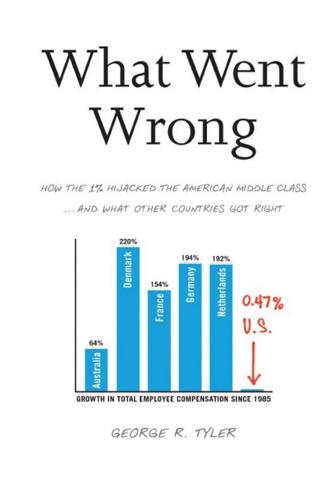
What Went Wrong: How the 1% Hijacked the American Middle Class . . . And What Other Countries Got Right
by
George R. Tyler
Published 15 Jul 2013
Its complexity further reduces its effectiveness: there are 50 pages of instructions for single mothers and others to follow when filing for the tax benefit.51 Finally, like food stamps and other support received by the working poor, the EITC is an opaque taxpayer subsidy to low-wage employers whose balance sheets in many instances are far stronger than those of taxpayers. Do Minimum Wages Cost Jobs? Minimum wages redistribute income from employers and customers to lower-wage workers. The business community contends the minimum wage causes unemployment. They are correct that an economic tradeoff exists, but misidentify it: a high minimum wage reduces poverty—not employment—a myth we now examine. Economists assume that employers react to high minimum wages by hiring fewer workers. It just makes intuitive sense. That logic led the United Kingdom, under Prime Ministers Margaret Thatcher and John Major, to honor executive suite pleas and abolish minimum wages in the early 1990s during that nation’s flirtation with Reaganomics.
…
Beginning before restoration of the minimum wage in 1999, their 10-year study determined that “the minimum wage over the entire period of time has a neutral effect on employment.”56 No evidence of an unemployment effect exists in northern Europe either. Indeed, economists there have come to learn that high and rising minimum wages coexist with job creation and falling unemployment. For example, the French unemployment rate fell to a 25-year low in June 2008 before the Wall Street recession despite minimum wages hovering around $10 per hour. With Germany considering establishing a nationwide minimum wage, some six research institutes were commissioned by the Federal Ministry of Labor in recent years to examine the potential impact on employment of that step.
…
Either because of employer collusion or isolated locations, the wages on offer from employers were frequently set below the employees’ actual value to the enterprise. That is why Winston Churchill supported minimum wages a century ago to counter what he termed “employee exploitation.”63 Higher minimum wages are not likely to produce unemployment in such circumstances. In contrast, if minimum wages are set above workers’ value, as perceived by employers, they will certainly reduce employment. David Neumark and William Wascher, for example, concluded that the minimum wage hike to $7.25 per hour in July 2009 cost 300,000 jobs.
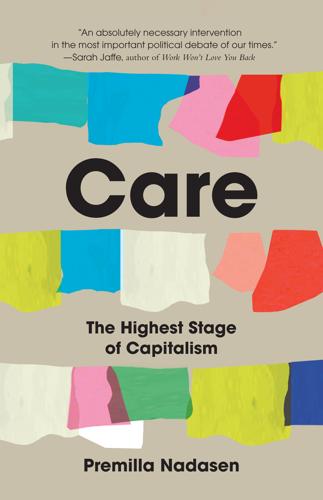
Care: The Highest Stage of Capitalism
by
Premilla Nadasen
Published 10 Oct 2023
They organized women regardless of their immigrant status or their racial, ethnic, and linguistic backgrounds. One campaign that best illustrates the goals of equality and recognition was for inclusion of domestic workers in the minimum wage provision of the Fair Labor Standards Act (FLSA). Domestic and agricultural workers were excluded from New Deal labor protections, including minimum wage, Social Security, unemployment insurance, and the right to organize and bargain collectively. Over time, some states offered labor protections and, by 1950, because of lobbying by labor feminists, domestic workers received social security. But when the HTA emerged, they still did not have a federal minimum wage.13 Household workers’ primary goal was to secure the same legal recognition and social standing for domestic work that was afforded to other forms of work.
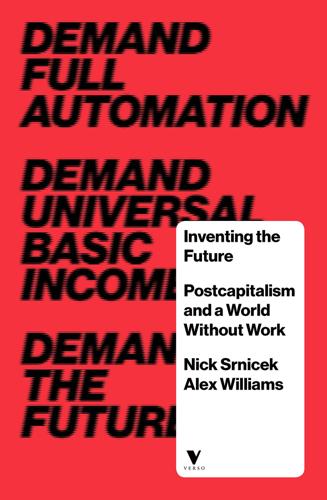
Inventing the Future: Postcapitalism and a World Without Work
by
Nick Srnicek
and
Alex Williams
Published 1 Oct 2015
Under these conditions, it is no surprise to see that many of the most promising political struggles in recent years have identified themselves as populist movements rather than class movements.18 By ‘populism’, we do not mean a sort of mindless mass movement, or a lowest-common-denominator revolt, or a movement with any particular political content.19 Populism is instead a type of political logic by which a collection of different identities are knitted together against a common opponent and in search of a new world.20 From the anti-globalisation movements, to Syriza in Greece, Podemos in Spain, numerous Latin American movements, and Occupy across the Western world, these movements have mobilised large cross-sections of society rather than just particular class identities.21 These populist movements have originated out of the frustration of unmet demands. Under normal democratic circumstances, demands are dealt with separately and within existing institutions – for instance, minimum wage increases, unemployment benefits and healthcare provision. Small changes are granted, but institutional arrangements, including society as a whole, are never questioned. In this fashion, existing hegemonies can be reinforced and threats generally modulated effectively. By contrast, a populist movement begins to emerge when these demands – for fair pay, social housing, childcare, and so on – are increasingly blocked.
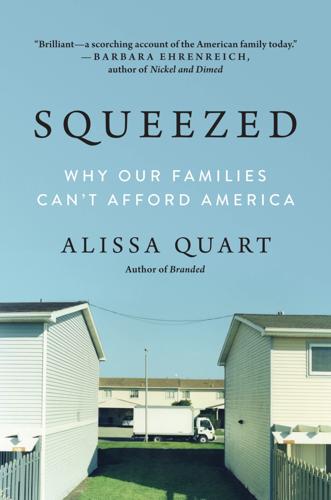
Squeezed: Why Our Families Can't Afford America
by
Alissa Quart
Published 25 Jun 2018
Domestic workers, almost certainly due to racism, were excluded. Southern lawmakers also insisted that job protections for farmworkers and domestic workers, many of whom were black, should be excluded from President Franklin D. Roosevelt’s Fair Labor Standards Act of 1938. Informal workers were also denied social benefits, like minimum wage, and unemployment compensation. Eighty years later, on a state level, things are now changing somewhat. In 2010, for instance, New York enacted the Domestic Workers’ Bill of Rights, which establishes an eight-hour workday and other protections. “When you say you have kids”: Ai-jen Poo has been leading her campaign to reframe care work, as she said in one interview, “from poverty-wage work that is invisible and undervalued into professional jobs with opportunities for career advancement.”
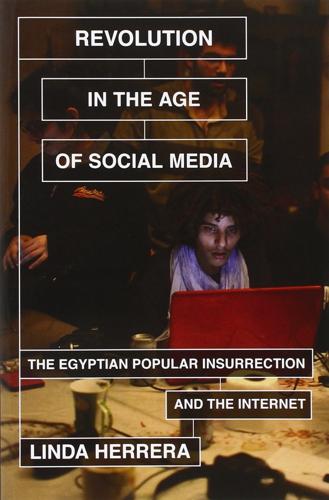
Revolution in the Age of Social Media: The Egyptian Popular Insurrection and the Internet
by
Linda Herrera
Published 14 Apr 2014
But as a start we should all move together to achieve one demand at a time by putting pressure on the government. As the people, our role is to direct the government, hold them accountable, evaluate their performance, and define the priorities, not vice versa. In the document, poverty is reduced to two demands: raising the minimum wage, and providing unemployment benefits to university graduates for a limited period. These goals come across as ad hoc when compared to the more pointed demands of eliminating the Emergency Law, removing Interior Minister Habib al-Adly from office, and limiting presidential terms. The campaigners proved incapable of formulating ideas about how to achieve an alternative economic order and address the structural causes of poverty and skewed wealth distribution.
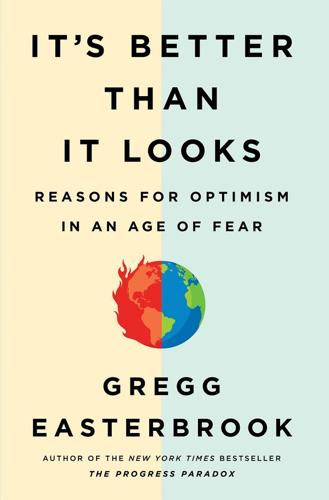
It's Better Than It Looks: Reasons for Optimism in an Age of Fear
by
Gregg Easterbrook
Published 20 Feb 2018
Some inequality is caused by concentration of earnings at the top; some is caused by the United States welcoming (as it should) large numbers of immigrants, who both reduce household median earnings and create downward pressure on wages; and some is caused by the low minimum wage, which zings entry-level workers. Several states have minimum wages that do keep pace with inflation: California’s is $10.50 an hour. High state minimum wages do not seem to spike unemployment, as sometimes predicted. California’s unemployment with a high minimum wage is fourth-tenths of a percent above unemployment in Texas, which has a low minimum wage. The twin goals of reducing unemployment and promoting social justice suggest that anyone working forty hours a week at the federal minimum wage should be able to support a small family. At $7.25 an hour, forty hours of work for fifty weeks produces about $13,500 in after-tax income, enough to support only one person.
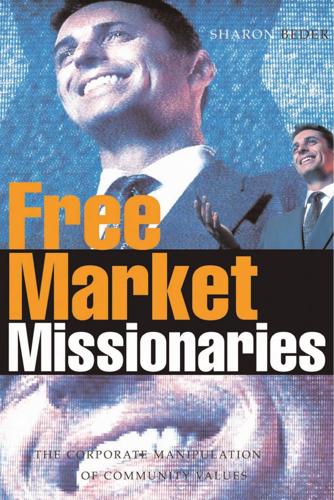
Free Market Missionaries: The Corporate Manipulation of Community Values
by
Sharon Beder
Published 30 Sep 2006
Everyone knows that we are subject today to a high degree of governmental control, but too many may come to believe that the efficiency being displayed by industry derives from this wartime incident of centralized planning and administration, rather than the qualities inherent within industry itself. 45 In the immediate post-war period, key business organizations were concerned about government intervention and controls on the one hand, and union activity on the other – Big Government and Big Labour. Proposals for further government intervention included price controls, a rising minimum wage, expanded unemployment insurance and tax reforms. Unions were active and in some cases demanding not just improved pay and conditions, income security and full employment through government spending, but also a say in corporate decisions 24 FREE MARKET MISSIONARIES in areas such as pricing and investment.

Markets, State, and People: Economics for Public Policy
by
Diane Coyle
Published 14 Jan 2020
Rapid changes in social norms may often be part of the explanation for large-scale changes in behavior, even in contexts where economic factors also play a large part. Economists have considered changes in crime waves, for instance, where street prices (such as prices for stolen goods) and factors such as minimum wages and unemployment strongly affect the crime rate—but so do social influences. Figure 4.4 shows one example—a steep decline in the homicide rate in New York City during the 1990s. Policy and policing certainly played a key part, but it is hard to account for the scale of the decline (or correspondingly the increase in the 1970s) using only obvious policy levers, such as the number of police or sentencing policies, or economic variables, such as unemployment or income.
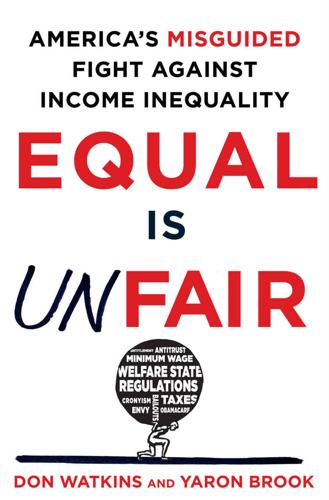
Equal Is Unfair: America's Misguided Fight Against Income Inequality
by
Don Watkins
and
Yaron Brook
Published 28 Mar 2016
Clearly these advocates very much want to believe that the price of labor—unlike that of gasoline, or Manhattan apartments—can be set based on considerations of justice, not supply and demand, without unpleasant side effects.”23 Later Krugman would come out in favor of enormous minimum wage hikes, declaring that it wouldn’t increase unemployment.24) Now let’s say you do find a job. The lower your pay, the more you have to work to achieve a given standard of living. But other regulations can make it harder for you to get the hours you want. Government-mandated overtime pay may make it too expensive for an employer to let you work more than a certain number of hours a week.

Economists and the Powerful
by
Norbert Haring
,
Norbert H. Ring
and
Niall Douglas
Published 30 Sep 2012
In such a dynamic framework, even an increase in unemployment is no proof that minimum wages are hurting more than they help (Acemoglu 2001). 198 ECONOMISTS AND THE POWERFUL One thing is clear, though: since a minimum wage makes sure that more of the surplus from the cooperation of labor and capital goes to the workers, most employers and their allies will oppose a (high) minimum wage. Money for nothing – Unemployment insurance When Karl Marx, Adam Smith or Arthur Pigou complained that employers exploited workers who were desperate for every penny, there were no unemployment benefits and only the most rudimentary social security. In many underdeveloped countries, this is still a sad reality.
…
The OECD stressed that the labor market institutions of various lowunemployment countries in Europe differed a great deal. This implies that there is no unambiguous right or wrong with regard to achieving a low rate of unemployment. Stringent employment protection for regular contracts is now considered to have only a small negative impact on long-run productivity, while higher minimum wages and a more generous level and duration of unemployment policies have a positive impact (OECD 2007). Why then did such a strong consensus among economists develop in the first place? The answer is likely found in the distributional consequences of the policies advanced. Unlike the consequences for growth and employment, these are pretty clear.
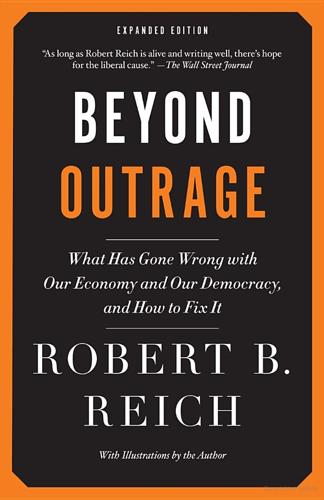
Beyond Outrage: Expanded Edition: What Has Gone Wrong With Our Economy and Our Democracy, and How to Fix It
by
Robert B. Reich
Published 3 Sep 2012
Meanwhile, all across America, public sector workers are being “furloughed,” which is a nice word for not collecting any pay for weeks at a time. It’s no great feat to create lots of lousy jobs. A few years ago the Republican congresswoman Michele Bachmann remarked that if the minimum wage were repealed, “we could potentially virtually wipe out unemployment completely because we would be able to offer jobs at whatever level.” If you accept her logic, why stop there? After all, slavery was a full-employment system. Conservative economists have it wrong. The underlying problem isn’t that most Americans have priced themselves out of the global/high-tech labor market.
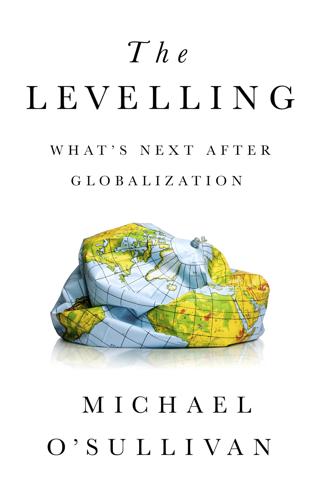
The Levelling: What’s Next After Globalization
by
Michael O’sullivan
Published 28 May 2019
Roosevelt’s New Deal. The New Deal was a watershed in the United States in many respects, one of which was that it marked the full evolution of the United States from an emerging to a developed nation. Some of the measures proposed by Roosevelt administration members such as Frances Perkins—a minimum wage and unemployment compensation, for example15—are already in place in China or are incarnated in the form of “iron rice bowls.”* But the Chinese system is not as comprehensive, or one might say generous, as those in other developed countries. China’s Ministry of Civil Affairs website shows that a relatively low number of rural households (approximately 20 million) receive subsistence allowances (about USD 50 per month).16 This is tiny compared to the benefits in more developed socioeconomic models (e.g., Denmark) and underlines the fact that very high saving rates in China exist on a precautionary basis, so that people have cash available for medical and economic emergencies.
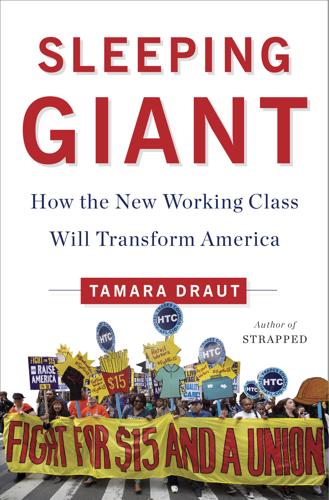
Sleeping Giant: How the New Working Class Will Transform America
by
Tamara Draut
Published 4 Apr 2016
But, importantly, Gilens found that “the starkest difference in responsiveness to the affluent and the middle class occurs on economic policy, a consequence of high-income Americans’ stronger opposition to taxes and corporate regulation.”19 In fact, if policy outcomes more generally reflected the preferences of the poor and the middle class, it’s probable that we’d have a higher minimum wage, more generous unemployment benefits, stricter regulation of big business, and a more progressive tax code.20 Given what we know about the causes of the Great Recession and its devastating and disproportional impact on the working class, the outsized role of the affluent on economic policy is particularly concerning.
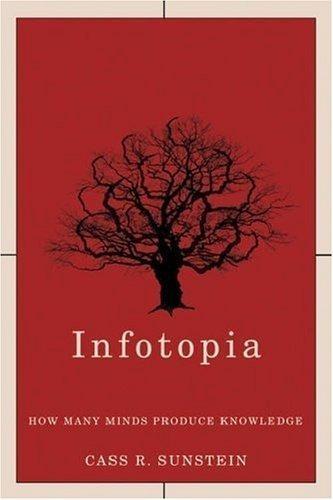
Infotopia: How Many Minds Produce Knowledge
by
Cass R. Sunstein
Published 23 Aug 2006
In all of these cases, there is reason to trust the people who are being asked, and hence the average answer is peculiarly likely to be right. But it would make no sense to make policy by asking everyone in the world whether the United States should sign the Kyoto Protocol, or whether genetic engineering poses serious risks, or whether a significant increase in the minimum wage would increase unemployment, or whether the death penalty has a deterrent effect on crime, or whether rent control policies help or hurt poor tenants. In these cases, there is a great risk that error and confusion at the individual level will be replicated at the level of group averages. The implications for group behavior and democracy are mixed.

Jihad vs. McWorld: Terrorism's Challenge to Democracy
by
Benjamin Barber
Published 20 Apr 2010
Unfortunately, Big Brother’s role as a guardian of social justice has also been superseded and the many junior siblings who have displaced him turn out to be both more intimidating and far less accountable. National regulatory commissions can curtail in-country labor exploitation with minimum wage laws, unemployment insurance, and safety regulations, but who can set and enforce such standards for the global market where unrooted companies can chase low-wage labor from country to country as they please? Far more today than in the nineteenth century, the workers of the world need to unite to offset the exploitative consequences of monopoly capital on a global scale.

How Capitalism Saved America: The Untold History of Our Country, From the Pilgrims to the Present
by
Thomas J. Dilorenzo
Published 9 Aug 2004
At a time when underemployment or unemployment of resources (including labor resources) was of tragic proportions, the focus of the government was to restrict output and employment even further with supply-reducing cartel schemes and limitations on hours worked. The scheme was destined to fail. First, if wages are forced up by government fiat, the effect is to reduce the demand for labor, which creates more unemployment. It is well known that the minimum-wage law causes unemployment, especially among lower-skilled workers. But at least the minimum-wage law applies primarily to entry-level employees and is therefore limited in the amount of harm it can do. The NIRA was an economy-wide minimum-wage (and maximum-hour) program, which rendered the job-destroying effect of the minimum-wage law universal.
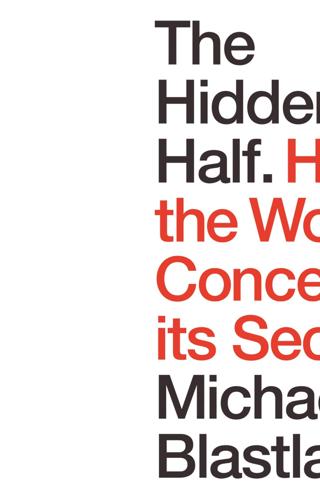
The Hidden Half: How the World Conceals Its Secrets
by
Michael Blastland
Published 3 Apr 2019
Index abstract formulas 141 Academy of Medical Sciences 133 adoption studies 41 aid, economic development 141 aid-effectiveness craze, the 153 alcohol consumption 180 AllTrials campaign 114–5 Altman, Doug 129–30 Amano, Yukiya 185 ambiguity 209–10 Amgen 111–2 Analysis (radio programme) 102 analytic validity 158, 263n18 anarchy 224 aphorisms 68–9, 149 apprenticeships 205–6 argument, beliefs and habits of 186 asthma 135 Attanasio, Orazio 225–9, 230 Autho, David 219–23 average knowledge 173 background influences 23–34 background norms, rejecting 24–5 bacon 161–3, 162–3 Banerjee, Abhijit 150–4, 157 Bangladesh 80–2, 82, 101–2, 158, 261n6 Bank of England 103, 216 Bank of Japan 103 Basbøll, Thomas 244–5 baseline data 165 base-rate neglect 176–7 basic laws 140 Bateson, William 245 BBC 88, 98 Beatles, the 52–3, 259n33 Begley, Glenn 111–7 behaviour context-specific 42–3 environmental cues 65–7 behavioural economics 157 Behavioural Insight Team 155, 156, 232 beliefs 60 contradictory 63–4 inconsistency of 60–6 justification 60–1, 63 manipulation 62–3 power of information on 66–8 self-contradiction 61–2 Berlin, Isaiah 199 betting, on knowledge 236–7 big causes, power of 35 big events causal intricacy 193–6 complexity 185–7 difficulty determining causality 188–96 power of circumstance 196–9 big picture, the 215–6 Bijani, Ladan 40–1 Bijani, Laleh 40–1 biographies 49 biological randomness 43–4 biomedical science, research standards 129–36 Bolsover 217–8 Boorstin, Daniel 17, 136, 138, 264n24 Booth, Charles 146–7 BP 211 brain, the 64 plasticity 56 self-justifying 83 breast cancer 45–6, 46 Brexit referendum 18–9, 20, 90, 214–8, 223–4, 241 Bunnings 77 Burckhardt, Jacob 255n20 Burke, Edmund 269n1 Burns, Terry 102–3 business decisions, failures 210–1 cancer 45–8 breast 45–6, 46 lung 174–5 risk 162–3, 166, 174–5 screening 132–3 Cancer Research UK 133 canned laughter 154–5 capitalism 118 Carillion 211 Carp, Joshua 123–4 Cartwright, Nancy 79, 79–82, 82, 193–4, 195, 202–3, 203–4, 263n18 causal instincts 123 causal interactions, complexity 239 causal intricacy 193–4 causal models 242–4, 243, 269–70n3 causal theorizing 212–4 causality assumption of 212–4 difficulty determining 188–96 existence of 276–7n12 hard 225–9 importance of 212 mechanical models 242–4, 243 in one person 48 cause and effect dependable 203–4 patterns of 23, 25–6, 26 supposed 248 unreliable 204 causes and causal influences 90, 94 competing 248 criminals 29 interaction 193–6 and luck 178 secret life of 8–11 simple 184–5 cells, biographical stories 47–8 certainty, desire for 235 Chadwick, Edwin 146–7 chance 14, 37–8, 247, 281n1 chaos theory 56–7, 276n10 Chater, Nick 59, 60, 63, 64–5, 66–7 Chernobyl disaster 185 child and adolescent development 23–6, 41–2 child mental health 206–7 childhood influences 23–5 delinquent boys 26–34 China, rise of 218–23, 279n19 choice, situated 31–3, 34 choice blindness 62 choices 60 Cialdini, Robert 154–5 Cifu, Adam 131–2 circumstances 70 power of 196–9 claims inflation 130 climate change 238–9 Clinton, Hillary 222 Cochrane Collaboration, the 189–90 cognition 64 cognitive biases 14 cognitive limitations 14, 214 Comaroff, John 107–8 common sense 69–70 comparative cost analysis 173 competence 236–7 complacency 237 complexity adding 244 big events 185–7 facing 15 hidden 184–201 of reality 245 complexity theory 276n10 complexity-avoidance 187 complications, hidden 187 Conan Doyle, Arthur 108 confidence 72 consistency 68–75, 202–4, 260n6, 260n8 constructive realism 17 consumer behaviour 77 context 41–2, 72, 101 context-specific behaviour 72 context-specific learning 42–3 control alternative to 248–9 elusiveness of 85–6 powers of 195 conviction 104 coping strategies 16–7, 225–46 adapting 230–3 betting 236–7 communicate uncertainty 237–9 embracing uncertainty 234–6 exceptions 244–5 experiment 230–3 governing for uncertainty 239–41 managing for uncertainty 241–2 metaphors 242–4 negative capability 234 relax 246 triangulation 233–4 use of probability 242 Corbyn, Jeremy 20 corporate power 241 cost/benefit analysis, cows 117–22 cows, cost/benefit analysis 117–22 Coyle, Diane 216, 262n12 Crabbe, John 85–7 credibility 238–9 credibility crisis 18 crime causes of 142–4 heroes and villains view 142 opportunist 144–5 reduced opportunity 144–5 theory of 142–6, 143 victims and survivors view 142–3 criminals causal influences 29 childhood influences 26–34 desisters 30 high rate chronics 30 life-course persistent offenders 28–9 life-courses 28, 236 variables 31 critical factors 83–5 crowds, wisdom of 149 cultural difference 79–82, 79–85 Daniels, Denise 43–4, 57 Darwin, Charles 50–1 data granularity 216–7 interpretation 98–100 Dawid, Philip 276–7n12 De Rond, Mark 198, 201 de Vries, Ymkje Anna 114 deadweight cost 205–6 debate 98 decision making 58–60 influences 32–3 situated choice 31–3 deep preferences 65 deeper rationale, construction of 60 Deepwater Horizon 211 defining characteristics 43 degrees of freedom 122–9 delinquent boys 26–34 dementia 176–7, 274n16 democracy 20 Deng Xiaoping 219 Denrell, Jerker 199, 201 desires 59 details importance of 49–54 neglecting 151–2 problem of 229 selective 26 determinism 28 development economics 150–3 developmental difference, sources of variation 9–11 developmental noise 10 difference 15 pockets of 214–24 Dilnot, Andrew 237, 275n3 disciplined pluralism 231 disorder 45 forces of 11–3 doubt 238 Down’s syndrome 166 drugs comparative cost analysis 173 impact 171–2 medical effect 167–9, 169, 170–4 non-responders 172 Numbers-Needed-to-Treat (NNTs) 168, 169, 170, 173–4 predictive weakness 170–3 duelling certainties 235 Duflo, Esther 83, 84, 141, 150–3, 157–8, 158–9, 230–1 ecological validity 263n18 economic development, aid 141 economic forecasting 92, 102–7 economic recovery 217–8 economics 233 economy, the 87–100, 91, 93, 94, 95 education 151–2, 206–7, 275– 6n7 Einstein, Albert 140–1 Emerson, Ralph Waldo 68 enigmatic variation 13–6, 48 environment context 72 non-shared 37 shared 35 environmental influences 43–4 epidemiology 181 epigenetics 6–7 erratic influences 60 essential you, the 59–60 estimates 89–91, 96 European Central Bank 103 evidence 21 balance of 114 conclusive 186, 187 the Janus effect 121, 122–9 limitations of 117–22 statistical significance 137 strength of 137 evidence-based medicine 133–4 exceptions 214–24, 244–5 expectations 35 big 196 frustration of 15 of regularity 47, 202–4 unrealistic 182 experience, influence of 33, 34, 55–7 experiment 230–3 expertise, crisis of 18–9 experts, credibility crisis 18–9 external validity 101, 158, 263n18, 264n19 extreme performance 199 failure 204–11 fairness 66–7 false negatives 113–4 false positives 113–4, 122 falsification 245 family, changes of 41 farmer and a chicken, the 202–4 fate 30 fears, exaggerated 46 Financial Times 77 First World War 108 Fitzroy, Robert 50 flat mind, the 60, 60–8 Flaubert, Gustave 139 forecasting 109 former Yugoslavia 108 foxes 199 France 186–7 Freedman, Sir Lawrence 108, 109 freedom 236 Fukushima nuclear power station meltdown 185–7 fundamentals 141 identifying 153 further education 208–9 Galbraith, John Kenneth 110 Gartner, Klaus 87 Gash, Tom 142–3 Gates, Bill 199 GDP data 262n12 growth estimation 88–100, 91, 93, 94, 95, 262–3n14 local 214–5, 216, 218 Gelman, Andrew 124–5, 244 gene–environment interaction 6–7 general principles 140 generalities 174 generalization 76–8, 146, 152, 263n18 genes and genetics influence of 34–7, 39–41, 44, 45–7 overclaiming 134–5 power of 33, 45 genetic risk 45–7 genius, dangerous 212–4 genotype 8 Germany 185, 186, 188 Gillam, John 77 global financial crisis, 2008–9 104, 106, 210, 235 globalization 213 Gove, Michael 18–9 granularity 216–7 ground truth 217 groupthink 149 guarantees, lack of 160 Guardian 207 Gupta, Rajeev 117, 118 Haldane, Andy 216–7, 218 Harford, Tim 156–7, 237 Harris, Judith Rich 40–2, 72 Hayek, Friedrich 105–6 health screening 177 heart disease 163–6 hedgehogs 199 Henry (ex-delinquent) 32 Hensall, Abigail 39–40, 41 Hensall, Brittany 39–40, 41 herd mentality 154–5 hidden causes 35–8 hidden half, the coping strategies 225–46 ignoring 202–24 mystery of 35 power of 44–5 hidden trivia 8–9 hindsight 78 hindsight bias 83 history 107–8 lessons of 109 Homebase 76–7 Honda, US motorcycle market penetration 196–9 hubris 77 human sameness irregularity 45–9 limits of 34–45 human understanding, fundamentals 213 Human Zoo, The (radio programme) 60–6 humility 224, 248–9 IBM 199 ibuprofen 163–5 ideological divide 240 ideologies 9–10 idiosyncratic influence 53–4 ignorance 21, 107 disguising 242 the shock of 7 imagination 138 impulsive judgement, value of 149 incarceration rates, United States of America 222, 240, 280n10 incidentals, effect of 51–2 incoherency problem, the 149 inconsistency beliefs 60–6 justifiable 70–1 incredible certitude 209 Indian Express 117 individual differences 56 individuality conjoined twins 39–42 neurological foundation of 56 industrial policy 208 inflation 102–7 influences background 23–34 childhood 26–34 criminals 26–34 decision making 32–3 environmental 43–4 erratic 60 hidden 204 microenvironmental 8–9, 253–4n12 information power of 66–8 selective 66–7 Institute for Fiscal Studies 205–6 Institute for Government 208–9 intangible differences 253n11 intangible variation 10, 229 interaction, problems of 193–6 internal validity 101–2, 158 International Journal of Epidemiology 43 intuition 54, 204 Ioannidis, John 121, 133–6 irrationality, human 14 irregularity 94 disruptive power of 224 frustration of 15 human 45–9 influence 12 problem of 229 underestimating 214–24 Islamic State 108 it’s-all-because problem 91, 96 James, Henry 29, 56 James, William 141 Janus effect, the 121, 122–9 Johansen, Petter 62 Johnson, Samuel 214 Johnson, Wendy 71–2 Jones, Susannah Mushatt 162–3, 165 journalism 237–8 Juno (film) 193 Kaelin, William 130 Kawashima, Kihachiro 197 Kay, John 16, 68, 197, 231, 232 Keats, John 138–9, 234 Kempermann, Gerd 56, 57 Keynes, John Maynard 107, 271n9 Keynesianism 103 King, Mervyn 103, 104, 106, 110 Kinnell, Galway 28 Knausgaard, Karl Ove 86–7 Knight, Frank 107 Knightian uncertainty 107 knowledge 12–3, 170 advance of 20–1 average 173 betting on 236–7 credibility crisis 18 critical factors 83–5 failures of 19, 76–8, 79–82 fallibility of 248 generalizable 234 generalization 76–8 illusion of 136, 138 lessons of the past 102–7, 107–10 in medicine 182 negative capability 138–9 as obstacle to progress 17 obvious 82 paths to 136–9 plausibility mistaken for 132 practical 30–1 pretence of 105–6 probabilistic 160, 161, 163–4, 172–3 and probability 180 problem of scale 177–80 provenance 116 relevant 82–5 replication crisis 111–7 subverting 76–110 and time variations 87–100, 91, 93, 94, 95 transfer 37, 76–8, 83, 101–2 unknowns 85–7 validity 100–2 validity across time 107–10 weakest-link principle 79–82 Krugman, Paul 210 Lancet 225–6 Langley, Winnie 51, 165, 178 Laub, John 26–34, 42 law-like effects, claims about 21 learning styles 207 Leicester City Football Club 199–201 Leon (ex-delinquent) 31–2 Leyser, Ottoline 114 life, mechanics of 51 life-course persistent offenders 28–9 limits and limitations 16–7, 44, 75 base-rate neglect 176–7 of cleverness 278n14 individual level 174–6, 178–9, 181–3 lack of guarantees 160 marginal probabilistic outcomes 176–7 medical effect 167–9, 169, 170–4 on prediction 165–6 on probability 160–83 problem of scale 161–6, 174– 6, 177–80, 181–3 Liskov Substitution Principle 261n3 Little Britain (TV comedy) 192 Liu, Chengwei 198, 201 lives, understanding 29 location shift 264n20 Loken, Erik 124–5 long-acting reversible contraceptives (LARCS) 190 luck 37–8, 48, 178, 198 lung cancer 174–5 Lyko, Frank 1, 2 machine mode thinking 151–2 Macron, Emmanuel 20 Manski, Charles 209, 235 Mao Zedong 218 marginal probabilistic outcomes 176–7 marmorkrebs 1–9, 4, 10, 12, 12–3, 22, 35, 81, 182, 252n2 Marteau, Theresa 65 Martin, George 52 May, Theresa 208 Mayne, Stephen 77 measurement 99–100 mechanical relationships 212, 242, 244 mechanical thinking 242–4, 243 media stigma 192–3 medical effect, drugs 167–9, 169, 170–4 medical reversal 131–3 medicine comparative cost analysis 173 knowledge in 182 non-responders 172 Numbers-Needed-to-Treat (NNTs) 168, 169, 170, 173–4 personalized 181–3 predictive weakness 170–3 probability and 167–9, 169, 170–4 memory 56, 102–7 Mendelian randomization 233 Menon, Anand 214–5 mental shortcuts 14–5 mere facts 202–3 meta-science 19, 20 methodological revisions 97–8, 120 mice 55 microenvironmental influences 8–9, 253–4n12 micro-irregularity 35–7 micro-particulars 128 Microsoft 147–50, 199 Miller, Helen 66–7, 67 mind, the flat 59–60, 60–8 shape 59 models and modelling 140, 242–4, 243, 269–70n3 moment when, the 52 morality, changing 108 More or Less (radio programme) 237 Munafò, Marcus 234 Nadella, Satya 147–8 National Survey of Family Growth 192 National Surveys of Sexual Attitudes and Lifestyles 191–2 nationalism 108 Nature 2, 112, 136, 168, 174 nature/nurture debate 3, 5–6, 9–10 negative capability 138–9, 234 neurology 58 New England Journal of Medicine 131–2 Newcastle upon Tyne 214 Newton, Isaac 140–1 noise 14 definition 10 developmental 10 as intellectual dross 11 re-appraisal of 11–3 non-shared environment 37 Nosek, Brian 129 noses 49–51 Nottingham 217 Numbers-Needed-to-Treat (NNTs) 168, 169 nurture, influence of 44 O’Connor, Sarah 217–8 Office for National Statistics 89, 92, 98, 99–100, 216 O’Neill, Onora 238 opinions 21, 59 order 11–2, 13 organ donation campaign 155–6 outside influence 44 overclaiming 134–5 overconfidence 21 overseas business expansion 76–8 Oxfam, sexual abuse scandal 210 Paphides, Pete 52–3 parental behaviour 41 parents, impact of 41 Parris, Matthew 63 parthenogenesis 1–2 particularism 271–2n15 particularity problem, the 93 past, the, lessons of 102–7, 107–10 pattern-making instinct 21 patterns 13 pendulums 57 perceptual systems 64 performance 72–5 personalized medicine 181–3 Peto, Richard 47–8 phenotypes 8 physiognomy, and character 50 plausibility 132 Plomin, Robert 43–4, 49, 57 pluralism 231–2 polarization 235 policy making 231–2 appraisal 277n4 chances of success 208 failures 204–9 governing for uncertainty 239–41 and probability 178–9 secret of 209 seminar 207–8 sequential changes 208 political assumptions, fall of 20 political beliefs 60–6 population validity 263n18 populism, rise of 20 poverty 240–1 Prasad, Vinayak 131–2 precision 183 predictability 28 predictive weakness 165–6, 170–3 preferences 59, 62 deep 65 priming 126–8 probabilistic knowledge 160, 161, 163–4, 170, 172–3 probability 54, 70, 107, 258n25, 272n2 advantages 177–80 base-rate neglect 176–7 difference in 30 fear of low probabilities 166 individual level 174–6, 178–9, 181–3 limits and limitations 160–83 marginal 176–7 medical effect 167–9, 169, 170–4 paradox 170 and policy making 178–9 predictive weakness 165–6 problem of scale 161–6, 174– 6, 177–80, 181–3 recognizing significance 161 risk evaluation 161–6 suggestion of knowledge 180 use of 242 usefulness 161 problems, conceptualizing 17 productivity growth 209–10 progress, knowledge as obstacle to 17 psychoanalysis 58 psychology 58 Pullinger, John 278n14 Pullman, Philip 37 quantification, risk and risk-taking 162–5 racism 125–6 radical uncertainty 106, 107 Radio, Andrew 102 rage to conclude, the 139 randomized controlled trials, value of 280n6 randomness, pure 9 Ranieri, Claudio 200–1 rationality 68, 260n6, 260n8 reality 230, 245, 254n14 reciprocity 155 reflection 65–6 regularity 73, 160 assumption of 212–4 expectations of 47, 202–4 search for 212, 230 statistical 240–1 replication crisis 18, 111–7, 117– 22, 129, 136, 138 Replication Project 129 research 111–39 balance of evidence 114 breadth 130 claims inflation 130 confidence in 115–6 credibility crisis 18 decision rules 136–9 depth 130 evidence-based medicine 133–4 false negatives 113–4 false positives 113–4, 122 fragility 128–9 freedom 122–9 half wrong 113, 115–6 the Janus effect 121, 122–9 limitations of 117–22 micro-particulars 128 multiple analyses 125–6 multiple conclusions 117–22 overclaiming 134–5 priming 126–8 redemption 20 replication crisis 111–7, 117– 22, 129, 136, 138 rigour 19 scepticism 115–6 standards 129–36 statistical significance 122 triangulation 138 validity 101–2 research-credibility crisis 18 rigour 19, 246 risk and risk-taking 70–1, 107, 186 alcohol consumption 180 cancer 162–3, 166, 174–5 communication of 133 evaluation 161–6 heart disease 163–6 quantification 162–5, 166 quantified 187 risk-perception 71 Rockhill, Beverly 181 Rolling Stone magazine 23 Rose, Geoffrey 175–6 Rowntree Joseph 146–7 Royal Bank of Scotland 211 Russell, Bertrand 202, 202–3 samples, validity 100–2 Sampson, Robert 26–34, 42, 236 sanitation 225–9 Santayana, George 109 scale, problem of 161–6, 174–6, 177–80, 181–3 scepticism 105, 115–6, 128, 206 schizophrenia 34–6, 256n10 Science 56 Scientific American 55 Scotland, Triple-P parenting programme 206 screening 132–3, 177 searing memory, doctrine of the 102–7 selection bias 244 self-understanding 67 Sense about 115 serendipitous events 43, 52–3 sex education, role of 189–90 short-term gene–environment interaction 7 significance, recognizing 161 Silberzahn, Raphael 125–6 Simmons, Joseph 122–3 situated choice 31–3, 34, 42 situations, appraisal of 72 sliding-doors moments 50 small differences, power of 56–7 small effects, influence of 49–54 small experiences, influence of 35–7 smartphones 97, 191 Smith, George Davey 50, 51, 234, 281n1 social contexts 31, 195 social media 191 social mobility 240–1 social policy 195 social proof 154–6 social reformers 146–7 social science, utility of 146–50 special theory of relativity 140–1 Spiegelhalter, David 180, 244–5 spontaneous interaction 9 stagflation 103 statins 171 statistical regularities 240–1 statistical significance 122, 137 stents, use of 131 stories and storytelling 25–6, 53–4, 244–5, 247, 248, 258n25, 258n27 structural forces 54 Sun, the 51 support factors 194 Surfers Against Sewage 70–1 surgeons, skills 73–4 system 1 thinking 149 systematic forces 54 systems-level thinking 153 Tamil Nadu 79–82, 101–2 Tangiers, Morocco 84 technology, changing 108 Teen Mom (TV show) 193 teenage pregnancy rate decline in 184, 188–96 estimates 275n3 terrible simplifiers 255n20 Tesco 77, 211 Thaler, Richard 157 theories 140–59 analytic validity 158 arguments about 150–4 of crime 142–6, 143 development economics 150–3 fitness 157 implementation 152 limitations 157 and practice 141 refining 156–7 relevance 157–8 social science 146–50 tension in 154–9 using 156–7 ‘thick’ description 86 time, validity across 107–10 Time magazine 193 time variations, and knowledge 87–100, 91, 93, 94, 95 The Times 63 toilets 225–9 Toshiba 211 trade-offs 190–1 trends 54 trials 156 triangulation 138, 233–4 Triple-P parenting programme 206–7 trivia, importance of 84–5 true uncertainty 107 Trump, Donald 20, 218, 222, 223–4 trust 238 trust deficit 218 trustworthiness 238 Tufte, Edward 139 turning points, variety 49–54 TV crime shows 143, 143 twins and twin studies conjoined 39–42 identical 34–7, 39, 256n10 Tyson, Mike 23, 23–6 Tyson, Rodney 24–5, 255n3 Uhlmann, Eric 125–6 uncertainty 89–90, 100, 209– 12, 254n14 admitting 238 communicating 237–9 data 89–91 embracing 234–6 erratic 93 governing for 239–41 Knightian 107 language of 238 managing for 241–2 in medicine 167–9, 169, 170–4 perpetual 230 radical 106, 107 true 107 uncertainty laundering 268n33 understanding hidden half of 13 limiting effects on 14 limits of 54 unemployment 221–2, 263n17 unintended consequences 105, 229 United States of America China trade 220–3 incarceration rates 222, 240, 280n10 labour market 221 minimum wage 266–7n10 unemployment 221–2 universal gravitational attraction, theory of 140–1 unknowns 85–7, 206 unusual, the 195 upbringing 23–5 Uyeno, Lori 47 validity across time 107–10 analytic 158, 263n18 ecological 263n18 external 101, 158, 263n18, 264n19 internal 101–2, 158 knowledge 100–2, 107–10 population 263n18 research 101–2 samples 100–2 values 59, 232 variation, sources of 5–8 Volkswagen, diesel emissions scandal 211 Wall Street Journal 219 Wallace, Alfred Russel 259n33 Walmart 77 Watts, Duncan 68, 69, 147–50 weakest-link principle 79–82 Wedgwood, Josiah 50–1 Wellington, Duke of 51 Wesfarmers 76–7 West Germany, motorcycle thefts 142–4 Western, Bruce 54 Wilson, Harold 99 World Bank Independent Evaluation Group 79 World Health Organization 162 world picture 63–4 Wright, Sewall 253n11
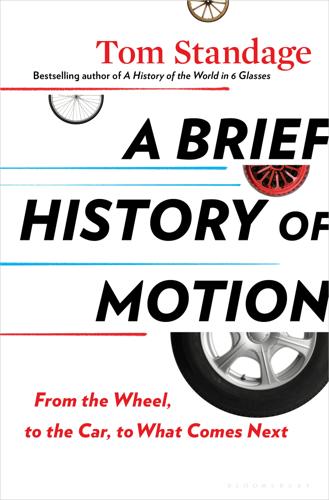
A Brief History of Motion: From the Wheel, to the Car, to What Comes Next
by
Tom Standage
Published 16 Aug 2021
As ride-hailing firms have expanded into new cities and raced to attract customers, they have fought bitter price wars, undercutting existing taxi providers and drawing riders away from public-transport systems. Ride-hailing platforms also insist that drivers are contractors, not employees, and therefore are not subject to rules on minimum wages, holiday pay, unemployment insurance, and so forth. Uber in particular has fought a series of legal battles with regulators around the world over the employment status of its workers, the level of background checks on drivers, and other issues. In many cases ride-hailing firms end up being granted licenses to operate in a particular city, but regulators can threaten to withdraw the license if certain conditions are not met.
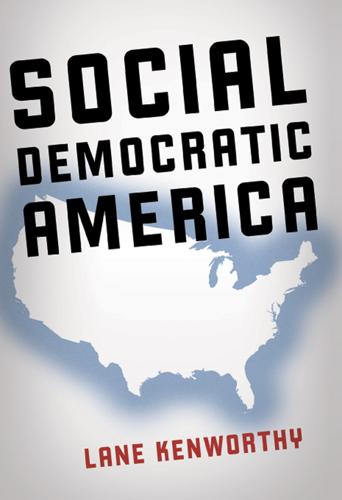
Social Democratic America
by
Lane Kenworthy
Published 3 Jan 2014
Limited liability and bankruptcy provisions encourage risk taking. Affordable high-quality childcare increases parental employment and boosts the capabilities of less advantaged kids. Access to medical care improves health and reduces anxiety. Child labor restrictions, antidiscrimination laws, minimum wages, job safety regulations, consumer safety protections, unemployment insurance, and a host of other policies help to ensure social peace. There surely is a tipping point at which government taxing and spending begins to harm the economy. But where are we in relation to that point? We have the experiences of the world’s rich countries to draw upon in answering this question.
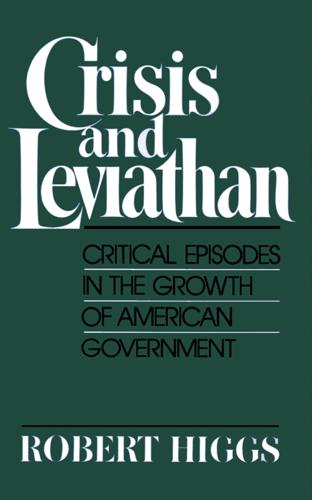
Crisis and Leviathan: Critical Episodes in the Growth of American Government
by
Robert Higgs
and
Arthur A. Ekirch, Jr.
Published 15 Jan 1987
Moreover, many of the institutional innovations of the 1930s remain embedded in the socioeconomic order today: acreage allotments, price supports, and marketing controls in agriculture, detailed regulation of private securities markets, extensive federal intrusion in union-management relations, enormous governmental lending and insurance activities, the minimum wage, national unemployment insurance, Social Security pensions and welfare payments, production and sale of electrical power by the federal government, fiat money wholly without commodity backing-the list goes on and on. All of 159 History 160 these familiar politico-economic institutions have functioned continuously since the 1930s.

Small Wars, Big Data: The Information Revolution in Modern Conflict
by
Eli Berman
,
Joseph H. Felter
,
Jacob N. Shapiro
and
Vestal Mcintyre
Published 12 May 2018
Difference-in-differences studies are like natural experiments in that they exploit a “treatment” that is taking place in one location and not another but compare the change over time in the treatment group to that in a control group: a raise in the minimum wage in New Jersey allowed researchers to compare the effect over time on fast-food employees to a control group in Pennsylvania where the minimum wage stayed the same. The findings refuted the argument that hikes in the minimum wage cause unemployment. David Card and Alan B. Krueger, “Minimum Wages and Employment: A Case Study of the Fast-Food Industry in New Jersey and Pennsylvania,” American Economic Review 84, no. 4 (1994): 772–93. Regression discontinuity design we discuss presently. But a famous early example of the technique was a 1960 study that showed that students who received a certificate of merit, compared to those who just missed the cutoff, were more likely to receive scholarships—but the recognition didn’t affect their long-term goals.
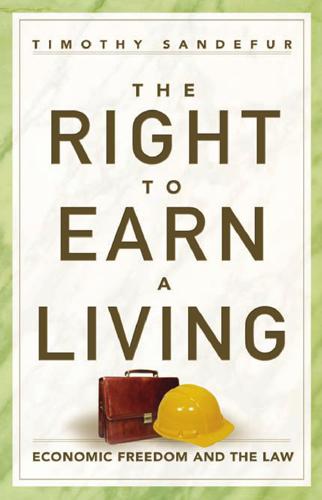
The Right to Earn a Living: Economic Freedom and the Law
by
Timothy Sandefur
Published 16 Aug 2010
As the Court has noted more recently, “[W]e never require a legislature to articulate its reasons for enacting a statute.”16 Even where the facts demonstrate that a law cannot accomplish its alleged purpose, courts will not find it unconstitutionally irrational.17 Economists are in almost universal agreement, for example, that minimum-wage laws increase unemployment and raise prices, particularly on those goods and services purchased by the poor.18 Yet no amount of expert testimony by economists could persuade a court to find the minimum wage unconstitutional under this test. Indeed, the legislature is not even required to have any actual evidence that a proposed law would work.
…
The term has, unfortunately, often been abused in the name of “social justice,” a meaningless concept. See Hayek, Law, Legislation and Liberty, vol. 2. 28. Adkins v. Children’s Hospital, 261 U.S. 525 (1923). 29. Washington v. Glucksberg, 521 U.S. 702, 760 (1997) (Souter, J., dissenting). 30. Arkes, The Return of George Sutherland, p. 13. The effects of these minimum wage laws were, in fact, to increase unemployment for women. Clifford F. Thies, “The First Minimum Wage Laws,” Cato Journal 10, no. 3 (Winter 1991): 715–46. Michael McGerr notes that the American Federation of Labor sought “[t]o shore up male wages [by] . . . favor[ing] equal pay for women. Of course, if men and women received the same wages, then men were more likely to get the jobs.”
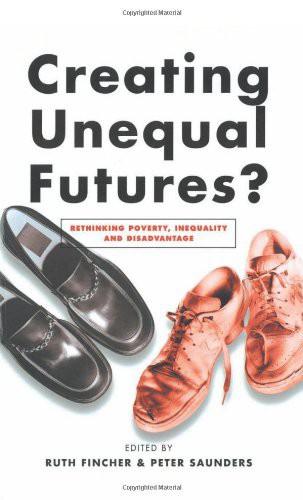
Creating Unequal Futures?: Rethinking Poverty, Inequality and Disadvantage
by
Ruth Fincher
and
Peter Saunders
Published 1 Jul 2001
It ignores the extent to which wages growth is largely unregulated among the two-thirds of the workforce outside the Award stream. Restraint in relative wages aims to make less skilled workers more employable by making their labour cheaper. Overseas research on the minimum wage has focused on whether raising the level of the minimum wage leads to increased unemployment for those workers on the minimum wage. This is basically the same logic which says that reducing wages for the less skilled leads to better employment outcomes. Careful examination of the overseas research suggests that the theoretical debate in this area is inconclusive and depends heavily on what kind of assumptions are made about how the labour market works.
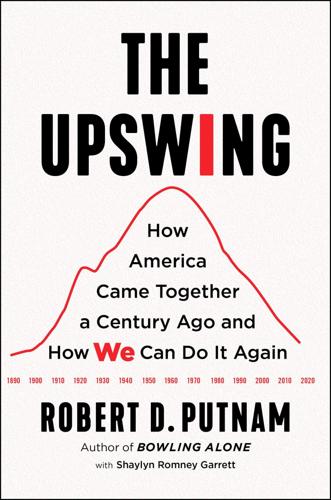
The Upswing: How America Came Together a Century Ago and How We Can Do It Again
by
Robert D. Putnam
Published 12 Oct 2020
Under the tutelage of progressive Democratic governor Al Smith, she became a shrewd politician, holding several positions in the New York State government, and putting the state in the forefront of legislative reform. She successfully championed more comprehensive factory inspections, safer working conditions for women, reduced working hours, and an end to child labor; and also broke ground on bringing about a minimum wage and unemployment insurance. Perkins became the first woman in American history to hold a cabinet post when she was nominated as secretary of labor by President Roosevelt in 1933, and her expertise and relentless advocacy for labor were instrumental in the design and implementation of the New Deal.7 Frances Perkins was one of thousands of middle-class Americans (a great many of them educated women) who, when face-to-face with the deplorable economic and social conditions of the cities, were galvanized—even radicalized—into action.
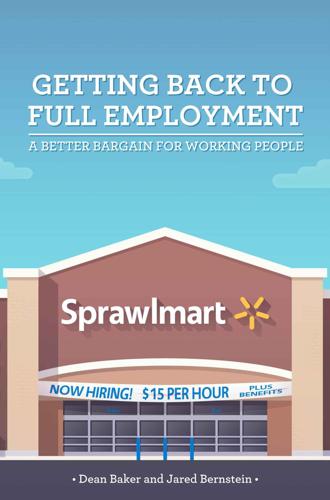
Getting Back to Full Employment: A Better Bargain for Working People
by
Dean Baker
and
Jared Bernstein
Published 14 Nov 2013
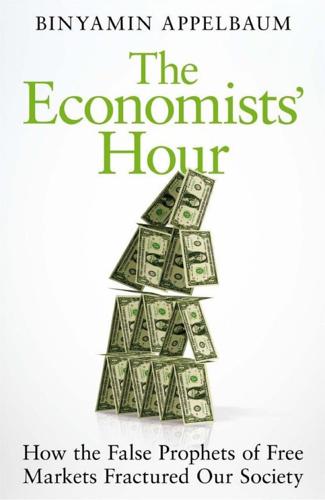
The Economists' Hour: How the False Prophets of Free Markets Fractured Our Society
by
Binyamin Appelbaum
Published 4 Sep 2019
The 1989 edition of Paul Samuelson’s economics textbook said that both unions and minimum wage laws caused unemployment. This was not a controversial view. A 1987 New York Times editorial called for the end of minimum wage laws, citing “a virtual consensus among economists that the minimum wage is an idea whose time has passed.” One of the first attempts to study the actual effects of minimum wage laws, published in 1994 by the Princeton economists David Card and Alan B. Krueger, found that a 1992 increase in New Jersey’s minimum wage had not produced a measurable increase in unemployment. This was heresy, and the response was suitably overheated.
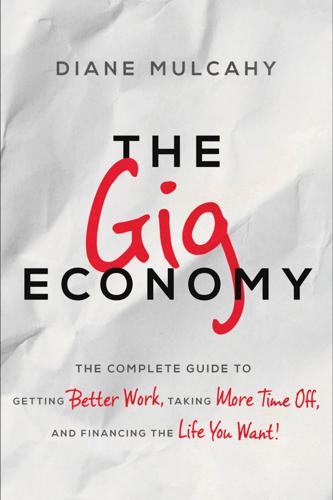
The Gig Economy: The Complete Guide to Getting Better Work, Taking More Time Off, and Financing the Life You Want
by
Diane Mulcahy
Published 8 Nov 2016
It won’t eliminate bad jobs and poorly paid workers, but what it can do is offer some positive change for these low-skill workers. In the Gig Economy, these workers have the chance to gain more control and have more flexibility and autonomy in their working lives. Uber drivers work under similar circumstances that most taxi drivers always have: they are contractors with no benefits, no overtime or minimum wage, and no access to unemployment insurance. But there are many more people willing to be Uber drivers than taxi drivers, in part because they can control when and how much they work. Similarly, the economic plight of an on-demand worker for a company like TaskRabbit or Postmates is not materially different from that of a low-wage hourly worker in a fast food restaurant or retail store.
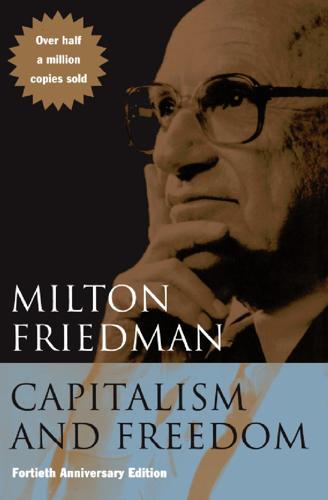
Capitalism and Freedom
by
Milton Friedman
Published 1 Jan 1962
In fact, insofar as minimum wage laws have any effect at all, their effect is clearly to increase poverty. The state can legislate a minimum wage rate. It can hardly require employers to hire at that minimum all who were formerly employed at wages below the minimum. It is clearly not in the interest of employers to do so. The effect of the minimum wage is therefore to make unemployment higher than it otherwise would be. Insofar as the low wage rates are in fact a sign of poverty, the people who are rendered unemployed are precisely those who can least afford to give up the income they had been receiving, small as it may appear to the people voting for the minimum wage.

Enlightenment Now: The Case for Reason, Science, Humanism, and Progress
by
Steven Pinker
Published 13 Feb 2018
Can we imagine a day in which the most famous columnists and talking heads have no predictable political orientation but try to work out defensible conclusions on an issue-by-issue basis? A day in which “You’re just repeating the left-wing [or right-wing] position” is considered a devastating gotcha? In which people (especially academics) will answer a question like “Does gun control reduce crime?” or “Does a minimum wage increase unemployment?” with “Wait, let me look up the latest meta-analysis” rather than with a patellar reflex predictable from their politics? A day when writers on the right and left abandon the Chicago Way of debating (“They pull a knife, you pull a gun. He sends one of yours to the hospital, you send one of his to the morgue”) and adopt the arms-controllers’ tactic of Graduated Reciprocation in Tension-Reduction (make a small unilateral concession with an invitation that it be reciprocated)?

The Trouble With Billionaires
by
Linda McQuaig
Published 1 May 2013

Arriving Today: From Factory to Front Door -- Why Everything Has Changed About How and What We Buy
by
Christopher Mims
Published 13 Sep 2021
noblesse oblige: Abha Bhattarai, “Amazon Boosts Minimum Wage to $15 for All Workers Following Criticism,” Washington Post, October 2, 2018, https://www.washingtonpost.com/business/2018/10/02/amazon-announces-it-will-boost-minimum-wage-all-workers-after-facing-criticism. 850,000 applications: Nat Levy, “Amazon Got 850K Job Applications in One Month After Announcing a $15 Minimum Wage,” GeekWire, January 31, 2019, https://www.geekwire.com/2019/amazon-got-850k-job-applications-announcing-15-minimum-wage. high levels of unemployment: Alana Semuels, “What Amazon Does to Poor Cities,” The Atlantic, February 1, 2018, https://www.theatlantic.com/business/archive/2018/02/amazon-warehouses-poor-cities/552020. “upskill” 100,000 of its employees: “Amazon Pledges to Upskill 100,000 U.S. Employees for In-Demand Jobs by 2025,” press release, About Amazon, July 11, 2019, https://press.aboutamazon.com/news-releases/news-release-details/amazon-pledges-upskill-100000-us-employees-demand-jobs-2025.
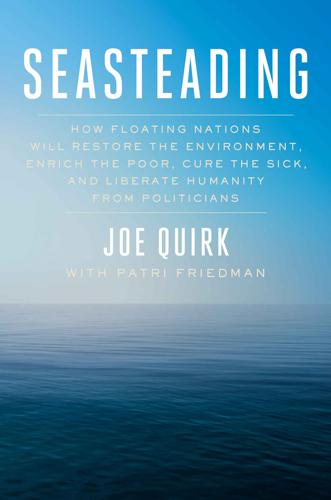
Seasteading: How Floating Nations Will Restore the Environment, Enrich the Poor, Cure the Sick, and Liberate Humanity From Politicians
by
Joe Quirk
and
Patri Friedman
Published 21 Mar 2017
Singaporeans get rich quick. According to a wealth report released by Barclays Bank in 2013, 51 percent of Singapore’s wealthy people have taken less than ten years to become millionaires. Western polemicists from the Left and the Right claim Singapore as their own. With no minimum wage, Singapore maintains an unemployment rate of a little more than 2 percent. Singapore’s efficient government maintains large budget surpluses and universal health care. The orderly, litter-free society has been the publicly expressed envy of citizens in a few neighboring countries suffering rampant corruption. Today Singapore’s primary social concern is coping with all the immigrants flocking to work there.

Gigged: The End of the Job and the Future of Work
by
Sarah Kessler
Published 11 Jun 2018

The Sharing Economy: The End of Employment and the Rise of Crowd-Based Capitalism
by
Arun Sundararajan
Published 12 May 2016
Third, the true underlying issue isn’t really about a desire among workers for full-time employment, but rather about a desire to obtain the benefits currently and exclusively associated with that status. As Fox notes, since the 1944 ruling—which for collective bargaining purposes categorized the newsboys as employees—workers classified as employees “now enjoy a wide variety of federal, state and local protections, from minimum-wage and overtime laws to unemployment insurance, that aren’t available to independent contractors.”3 This is an important distinction for a number of reasons, most saliently because the specter of future litigation may actually be preventing workers from getting benefits funded by the platforms. Since one of the IRS’s criteria for determining whether a worker is an employee is whether that worker gets benefits, a platform that considers benefits for its independent-contractor workers as, for example, a retention strategy, or a way of attracting new workers, will shy away from this to avoid potential class-action lawsuits.

The Fourth Revolution: The Global Race to Reinvent the State
by
John Micklethwait
and
Adrian Wooldridge
Published 14 May 2014

The Unknowers: How Strategic Ignorance Rules the World
by
Linsey McGoey
Published 14 Sep 2019

Last Best Hope: America in Crisis and Renewal
by
George Packer
Published 14 Jun 2021

Wealth and Poverty: A New Edition for the Twenty-First Century
by
George Gilder
Published 30 Apr 1981
Since CETA was spending over $10 billion annually in the late seventies and much of the money was going to unionized municipal workers and middle-class social servants, the simultaneous rises in unemployment, labor force withdrawal, and small-business failure in the inner city are not as surprising as they may seem. Indeed, in view of welfare, unemployment compensation, and minimum-wage policies that further harden the core of ghetto unemployment, the uselessness of CETA seems obvious and inevitable. A key effect of such programs, however, is not financial, since, particularly in the ghetto, few businesses resort to bank loans. Here the main effect is to deprive ghetto businesses of potential low-cost labor.
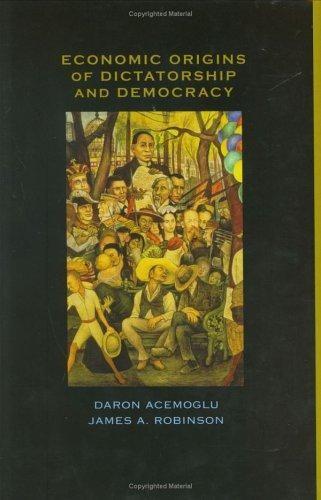
Economic Origins of Dictatorship and Democracy
by
Daron Acemoğlu
and
James A. Robinson
Published 28 Sep 2001

The End of Ownership: Personal Property in the Digital Economy
by
Aaron Perzanowski
and
Jason Schultz
Published 4 Nov 2016
Long-term renters have even been evicted to make room for vacationers.3 The unseen costs of the sharing economy are also borne by the increasing number of workers classified as independent contractors. By insisting on that classification for its drivers, Uber—currently valued at over $50 billion—avoids paying the minimum wage, payroll taxes, health insurance, unemployment benefits, and workers compensation for the vast majority of its workers.4 That cost shifting isn’t apparent to Uber users. All they see is the few dollars they saved compared to a taxi and the free bottle of water. These problems are hardly insurmountable. They are largely the function of business models that have outpaced the law.
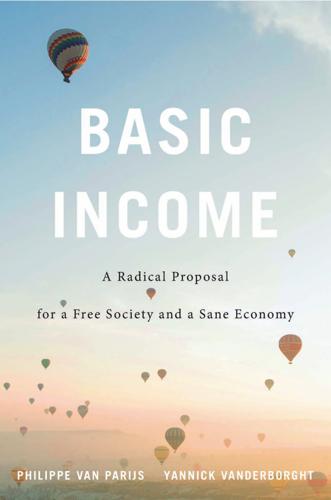
Basic Income: A Radical Proposal for a Free Society and a Sane Economy
by
Philippe van Parijs
and
Yannick Vanderborght
Published 20 Mar 2017
If a parade of �people of increasing heights is used to represent the distribution of earnings, the �giants at the end get taller from de�cade to de� cade, the walkers of average height come �later and �later in the pro�cession, and �there are more and more dwarfs whose earnings do not reach the level of what is regarded as a decent income, or are at risk of falling �under it.4 Such a polarization of earning power can be expected to manifest itself in dif�fer�ent ways, depending on the institutional context. Where the level of remuneration is and remains firmly protected by minimum-�wage legislation, collective bargaining, and generous unemployment insurance, the result tends to be massive losses of jobs. Where such protections are or become weaker, the results tend to be dramatic increases in the numbers of �people having to scrape by, �doing precarious jobs that pay miserable wages. 5 Such trends are 5 BASIC INCOME already vis�i�ble, but if the predicted effects of the new wave of automation materialize, they �will get much worse.

The Quiet Coup: Neoliberalism and the Looting of America
by
Mehrsa Baradaran
Published 7 May 2024
Card and Krueger had to wait for a natural experiment and collect enough data over a long period of time to prove their case, which they were able to do in 1994, providing their volumes of rigorous data to be parsed through by other economists.41 Still, Posner was not persuaded. In the ninth edition of Economic Analysis of Law (2014), Posner continued to claim that minimum wage laws led to unemployment. In a lengthy footnote to the section, Posner included a long string of citations and noted that “a vast empirical literature on the economic effects of a minimum wage” supports his theory. He described Card and Krueger, the only economists who sought to verify the theory, as “the principal contrarians.”42 Posner would continue to stick with the old dead theories that justified their opposition to minimum wage rather than adapt with the field.

After the New Economy: The Binge . . . And the Hangover That Won't Go Away
by
Doug Henwood
Published 9 May 2005
Those of us w^ho are not constrained by a faith in the correlation of pay and productivity, or v^ho don't accept conventional definitions of what constitutes productive labor, will want to look elsewhere. Leading culprits are racial, sexual, and other forms of discrimination; the declining power of unions; the eroding value of the minimum wage; cutbacks in social spending (welfare and unemployment benefits act as a kind of floor under the wage—as the floor is lowered, so too are wages, especially at the bottom); persistent labor market turbulence (layofis, restructurings, givebacks) that put workers on the defensive and weaken their bargaining power; relatively high rates of unemployment, even in good times (not true in the late 1990s, but true for the twenty previous years^); and, more controversially, the increasing importance of international trade and immigration.
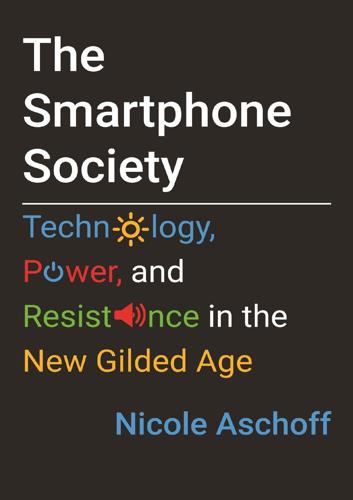
The Smartphone Society
by
Nicole Aschoff
Many don’t even know they are being tracked, because employers are not required to tell them, and a significant percentage are tracked twenty-four hours a day, whether they’re working or not.55 Moreover, many algorithmically managed workers don’t have the rights that regular employees have. Those designated as independent contractors—pretty much all on-demand workers today—are not entitled to minimum wage, sick days, overtime pay, safety protections, unemployment or health insurance, a pension plan, or disability pay. App workers in service jobs are held hostage to the reviews of fickle customers, and if they have a problem, their app boss isn’t much help. Melissa, an app driver for the food delivery service DoorDash, voiced a common complaint in an article that appeared in the Guardian in 2017.

The Meritocracy Trap: How America's Foundational Myth Feeds Inequality, Dismantles the Middle Class, and Devours the Elite
by
Daniel Markovits
Published 14 Sep 2019
Americans from the top tenth of the income distribution display similarly conservative economic views: when compared to median Americans, the rich are substantially more hostile to high top marginal tax rates, substantially more inclined to reduce capital gains and inheritance taxes, substantially less inclined to raise the minimum wage or increase unemployment benefits, and substantially more skeptical of government regulation of corporations and industry. The Phillips Exeter survey also revealed that three to five times as many students were conservative on economic issues as on social ones. Truly rich Americans are, if anything, more economically conservative still.
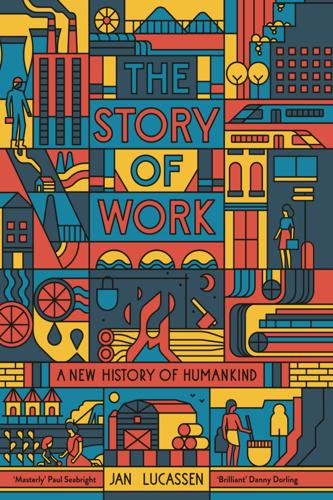
The Story of Work: A New History of Humankind
by
Jan Lucassen
Published 26 Jul 2021
If only to offer an alternative for socialism, considered as extremely dangerous, all industrializing countries attempted some form of regulation of safety and working hours in the factories. Equally important was state interference in insurance matters. As we have seen, in case of conflicts, mediation, sometimes by special courts, was also offered. A next step was state interference in labour market intermediation, the setting of minimum wages and, finally, unemployment provisions, apart from poor relief.130 In the following, I focus in particular on some important forms of workers’ insurance, and especially those against work accidents, sickness and unemployment before the First World War. The two main varieties of workers’ insurance, emulated in one way or another worldwide, developed in Britain and Germany.131 Insurance schemes against accidents, sickness and unemployment: Two models In Britain, for a long time, the state’s basic response was the enhancement of ‘self-help’, especially in the form of mutual insurance against temporary incapacity to work due to sickness and accidents, organized by Friendly Societies, mostly established independently of the masters.
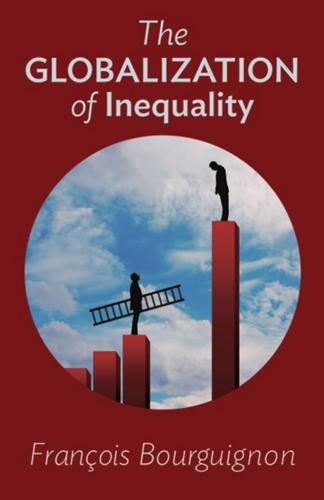
The Globalization of Inequality
by
François Bourguignon
Published 1 Aug 2012

Work Won't Love You Back: How Devotion to Our Jobs Keeps Us Exploited, Exhausted, and Alone
by
Sarah Jaffe
Published 26 Jan 2021
In Denmark, the 3F union managed to win a collective bargaining agreement with a platform that provides cleaning workers to private homes. Workers will be considered employees of the platform—something that most of the bigger app-based services have fought strenuously against—and gain minimum-wage protections, job security, and unemployment benefits in case of illness, as well as something crucial for app-based workers, often called out at the touch of a button: 50 percent pay if the job is canceled less than thirty-six hours before it begins. 47 Organizing has been difficult for domestic workers precisely because they have individual, one-on-one relationships with employers; the standardization of services like Merry Maids or the apps at least offers some hint of a way that the workers can come together to pressure the boss, something like the way home care workers have been able to bargain with governments at the state level.
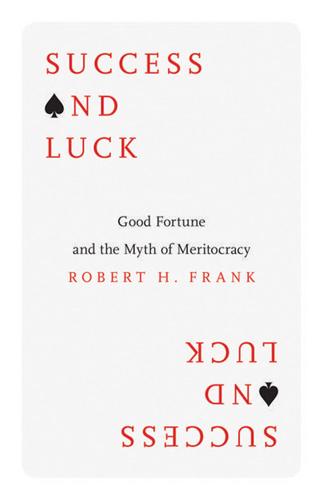
Success and Luck: Good Fortune and the Myth of Meritocracy
by
Robert H. Frank
Published 31 Mar 2016

Utopia for Realists: The Case for a Universal Basic Income, Open Borders, and a 15-Hour Workweek
by
Rutger Bregman
Published 13 Sep 2014
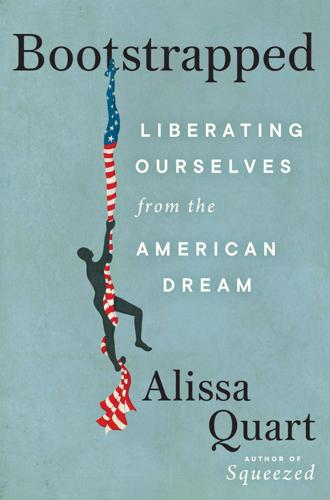
Bootstrapped: Liberating Ourselves From the American Dream
by
Alissa Quart
Published 14 Mar 2023
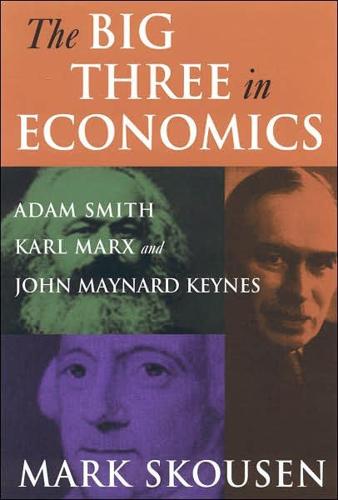
Big Three in Economics: Adam Smith, Karl Marx, and John Maynard Keynes
by
Mark Skousen
Published 22 Dec 2006
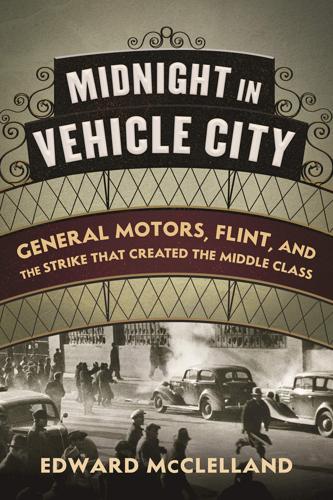
Midnight in Vehicle City: General Motors, Flint, and the Strike That Created the Middle Class
by
Edward McClelland
Published 2 Feb 2021
Roosevelt, names her to run the Industrial Board, where she supervises factory inspectors. When Roosevelt is elected president, in 1932, he invites Perkins to join his cabinet. Before accepting she asks Roosevelt to include a platform of progressive labor legislation in his New Deal: ending child labor, an eight-hour day to spread work more widely, a minimum wage, and nationwide systems of workmen’s compensation, unemployment insurance, and Social Security. Roosevelt agrees, although he worries that a minimum wage is unconstitutional. The labor movement Perkins has been appointed to oversee is at its lowest ebb in decades. The American Federation of Labor, which had four million members in 1919, has been reduced to half that number during the Depression.

Free to Choose: A Personal Statement
by
Milton Friedman
and
Rose D. Friedman
Published 2 Jan 1980
In the early fifties the unemployment rate for teenagers averaged 10 percent compared with about 4 percent for all workers—moderately higher, as one would expect for a group just entering the labor force. The unemployment rates for white and black teenagers were roughly equal. After minimum wage rates were raised sharply, the unemployment rate shot up for both white and black teenagers. Even more significant, an unemployment gap opened between the rates for white and black teenagers. Currently, the unemployment rate runs around 15 to 20 percent for white teenagers; 35 to 45 percent for black teenagers.7 We regard the minimum wage rate as one of the most, if not the most, antiblack laws on the statute books.
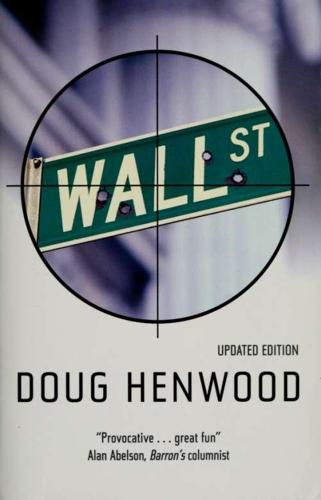
Wall Street: How It Works And for Whom
by
Doug Henwood
Published 30 Aug 1998
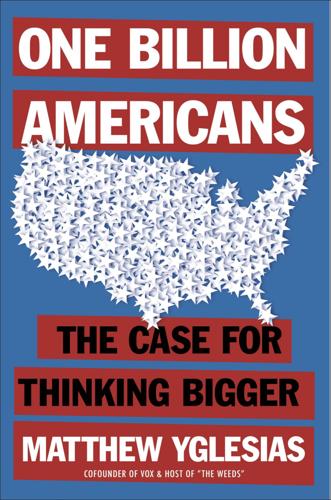
One Billion Americans: The Case for Thinking Bigger
by
Matthew Yglesias
Published 14 Sep 2020
Card is something of an iconoclast who was a pioneer in driving the economics profession’s empirical turn—an approach that’s fairly dominant today but that was novel in the late 1980s and early 1990s, when he was making a name for himself. The idea is that economists should try to use statistical tools to understand how the economy really works rather than insist that simple supply and demand charts tell you everything you need to know. He’s probably best known today for pioneering work on minimum wage increases, work that found no adverse impact on unemployment and that served as inspiration for a later set of researchers and advocates on this topic.* Card later recounted that this work “cost me a lot of friends” and that many people in the field “thought that in publishing our work we were being traitors to the cause of economics as a whole.”* Card similarly tackled a supply and demand question in his 1990 paper “The Impact of the Mariel Boatlift on the Miami Labor Market.”
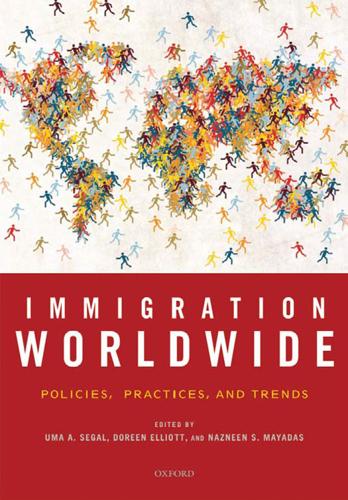
Immigration worldwide: policies, practices, and trends
by
Uma Anand Segal
,
Doreen Elliott
and
Nazneen S. Mayadas
Published 19 Jan 2010
Both single and married workers migrated to Thailand, bringing along with them their dependents. Most migrants were Buddhists. As for those from Myanmar, a sizable number were from ethnic Karen, Mon, and Table 20–2. GNP, GDP, Minimum Wage, Income of the Poorest, Unemployment Rate, and Population of Cambodia, Loas, Myanmar, and Thailand (2003) Country Cambodia Loas Myanmar Thailand GNP (per capita) (US$) GDP (per capita) (US$) Minimum Wage (per month) (US$) Income Distribution (Poorest 20%) (%) Unemployment Rate (%) Population 260 320 N/A 2,160 1555.83 1756.29 1733.45 6936.87 40 41.7 30 126.6 6.9 7.6 NA 6.4 2.5 5.7 5.1 2.2 13,363,421 6,068,117 42,720,196 64,265,276 Sources: www.nationmaster.com, www.worldbank.org, www.boi.go.th, www.Phiengch.free.fr, www.aworldconnected.org. 308 Nations with Increasing Immigrant Populations 2,204,795 (100%) Skilled workers with work permit 81,195 (3.7%) 800,000 (36.3%) Estimated undocumented workers Undocumented 36% Undocumented Skilled 4% Await citizenship Asylum-Seekers Unskilled Overstay Overstay 19% 409,258 (18.6%) Overstay Await citizenship 23% Unskilled 13% Unskilled Labor with work permit 288,780 (13.1%) Asylum-Seekers 5% Asylum-seeker 111,139 (5.04%) Skilled Aliens waiting citizenship and those permitted by ministry of Interior to stay temporarily in Thailand (514,424 (23.3%) Figure 20-2.
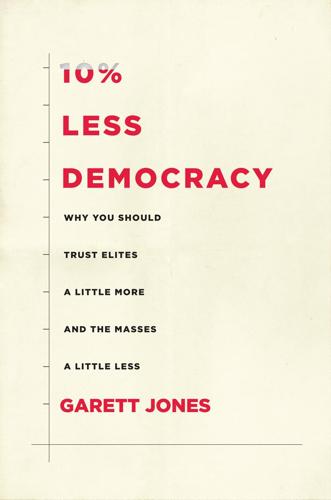
10% Less Democracy: Why You Should Trust Elites a Little More and the Masses a Little Less
by
Garett Jones
Published 4 Feb 2020

Tomorrow's Capitalist: My Search for the Soul of Business
by
Alan Murray
Published 15 Dec 2022
In Miami-Dade County, those numbers are $16.08 and $31.41, respectively; and in Los Angeles County they’re $19.35 and $39.06.28 Whichever part of the country you live in, these numbers are far from the legal minimums. What is the obligation of companies to make sure their workers earn a living wage? Critics of the minimum wage hike argue that it would lead to increased unemployment, particularly among young people. But the evidence on that point is not conclusive. JUST Capital released a study in July 2020, in collaboration with MIT, challenging the idea that raising the minimum wage is a burden on companies and ultimately leads to unemployment.
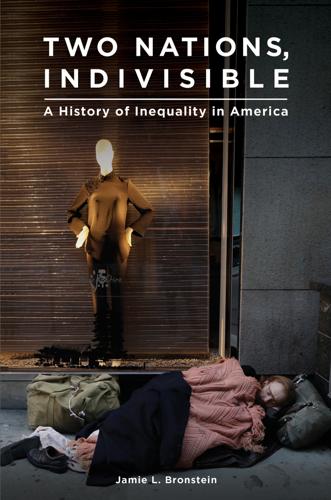
Two Nations, Indivisible: A History of Inequality in America: A History of Inequality in America
by
Jamie Bronstein
Published 29 Oct 2016
Environmental regulations are seen not as preserving streams and forests for future generation; they are viewed as ways of interfering with the free use of private property.”8 Reaganomics also emphasized deregulation. Proponents argued that government regulations required businesses to spend money on compliance that they might otherwise have spent on growing productive capacity.9 Reagan attacked the minimum wage, which he argued was a cause of unemployment, and attempted to institute a subminimum wage for young people, which was blocked by a House Democratic majority. As the minimum wage lost ground against inflation, Democrats in the House and Senate were ultimately forced to accept a subminimum “training wage” for certain kinds of on-the-job training, in order for any increase in the regular minimum wage to occur.10 Finally, Reagan’s programs included cutbacks in spending on social services, education, and welfare.
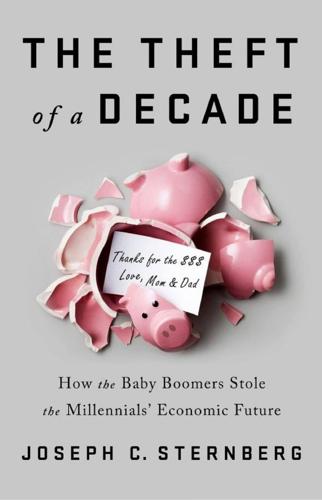
The Theft of a Decade: How the Baby Boomers Stole the Millennials' Economic Future
by
Joseph C. Sternberg
Published 13 May 2019

Capitalism in America: A History
by
Adrian Wooldridge
and
Alan Greenspan
Published 15 Oct 2018
The “official liberalism” of Supreme Court justices and bankers reflected general educated opinion. There was a broad and deep consensus that the market was a stern but ultimately benign ruler: obey the market and society would get richer; disobey the market and not only would society get poorer but you would reap all sorts of perverse consequences. Minimum wages would lead inexorably to higher unemployment, for example. Laissez-faire economics ruled not just in the economics departments but across the broad range of intellectual life. William Lawrence, an Episcopal bishop, said that there was “an elementary equation” between men’s wealth and God’s grace.”10 Lawyers believed that freedom of contract was at the heart of Anglo-Saxon law.
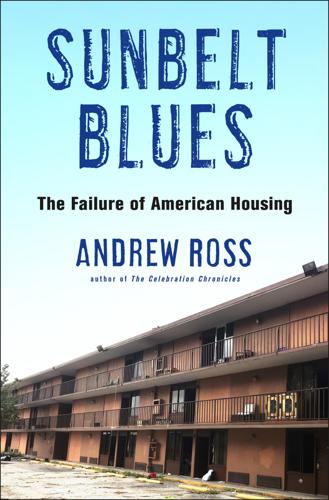
Sunbelt Blues: The Failure of American Housing
by
Andrew Ross
Published 25 Oct 2021
See Department of Community Affairs debt Decker, Mary Denver, Colorado Department of Children and Families Department of Community Affairs (DCA)–10 Deseret Ranch Desmond, Matthew de Soto, Hernando Detroit, Michigan Deva, Surya Discovery Cove Disney, Abigail Disney College Program Disney Development Company Disneyland Disney Springs Disney University Disney World business plan customer service training employees/workers employees’ housing needs, response to Good Neighbor hotel partnership program Grand California Hotel growth of Osceola County petition for creation of special district powers of self-government purchase of BK Ranch risk to brand exposure Route 192 service unions visitors wage hike See also Walt Disney Company displacement Disston, Hamilton Distressed Asset Stabilization Program distributed hotel Dixie Highways Dollar Tree Donley, Amy Dougherty, Conor Downey, Mary drug traffic Dublin, Ireland East Central Florida East Central Florida Corridor Task Force East Coast East Coast Railway Economic Policy Institute economy drugs industrial informal low-wage of peninsular Florida sharing Eisenhower, Dwight Eisner, Michael El-Alfy, Mohamed El Camino Real, California Eliot, George El Paso, Texas Encore Engels, Friedrich English Poor Laws environmental conservation environmental consultants environmental damage environmental groups environmental regulation EPCOT Everglades Evicted: Poverty and Profit in the American City (Desmond) eviction foreclosures and of local tenants mass moratorium on notices protections against right to evict Expedia Experience Kissimmee Experimental Prototype Community of Tomorrow extended-stay hotel motels Facebook Fair Housing Act Fair Tax Mark Fairway “families in transition” program family business single-family houses single-family rentals single-family zoning Farha, Leilani federal moratorium on evictions federal poverty line federal stimulus FEMA Fight for $15 campaign financial crash financialization Fladung, Elizabeth Lloyd FlipKey Florida affordable housing programs Department of Community Affairs (DCA) land conservation program land grab minimum wage moratorium on evictions statutes tax law tourism in unemployment benefits Florida Dream Homes Florida Native Plant Society Florida Project, The (Baker) Florida Restaurant and Lodging Association “Florida’s 68th County” Florida Vacation Rental Managers Association foreclosures casualties of and evictions home foreign investors Fortune 100 corporations Fort Lauderdale, Florida forty-acre wood Shingle Creek Four Corners Four Seasons Freedman, Joel Frostbelt states Gatorland Gator Motel gentrification Georgia Golden Oak Gomez, Cristina Good Neighbor hotel partnership program Goodwin, Linda Google Graeber, Danielle Grand California Hotel Graves, Michael Great Britain “deserving poor” Great Freeze Great Lakes Great Plains Great Recession Green, Charlie Green Island Ranch Green New Deal Gulf Coast Gutiérrez, Ramona Hahnemann University Hospital Haicken, Jeremy Harley, Sharon Harmony Hart, Barney, Brett, and Linda Haunted Mansion Hawaii Health Care Center for the Homeless (HCCH) Help Now Hickory, North Carolina “Hidden Homeless, The” (Fladung) Hinckley, Gordon B.
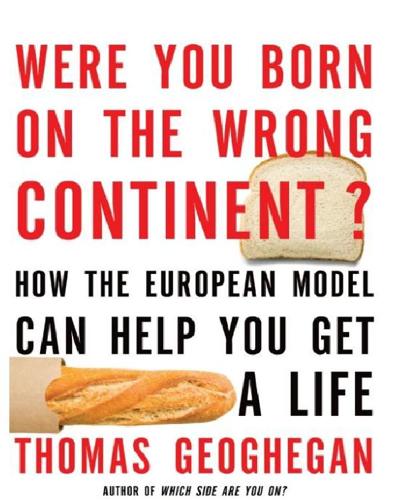
Were You Born on the Wrong Continent?
by
Thomas Geoghegan
Published 20 Sep 2011

Making It in America: The Almost Impossible Quest to Manufacture in the U.S.A. (And How It Got That Way)
by
Rachel Slade
Published 9 Jan 2024
MIT’s 2020 report “The Work of the Future: Building Better Jobs in an Age of Intelligent Machines” argues that government and innovation can, and should, work hand in hand to “innovate to rebalance the desire of employers for low-cost, minimal commitment, and maximal flexibility, with the necessity that workers receive fair treatment, reasonable compensation, and a measure of economic security. The U.S. must craft and enforce fair labor standards, ensure effective collective bargaining, set a well-calibrated federal minimum wage, extend the scope and flexibility of its unemployment insurance system, and modernize its dysfunctional system of employer-based health insurance.” Shifting policy focus from economic growth to lifelong skills training for Americans would herald a new, worker-centered era. Could coal miners be retrained for jobs in green energy, for example?
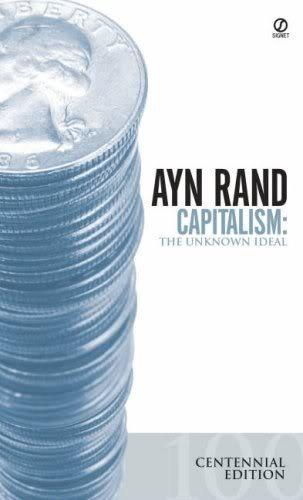
Capitalism: the unknown ideal
by
Ayn Rand
Published 15 Aug 1966
As a result of the high wage rates, employers can afford to hire fewer workers; as a result of curtailed production, employers need fewer workers. Thus, one group of workers obtains unjustifiably high wages at the expense of other workers who are unable to find jobs at all. This—in conjunction with minimum wage laws—is the cause of widespread unemployment. Unemployment is the inevitable result of forcing wage rates above their free-market level. In a free economy, in which neither employers nor workers are subject to coercion, wage rates always tend toward the level at which all those who seek employment will be able to obtain it.
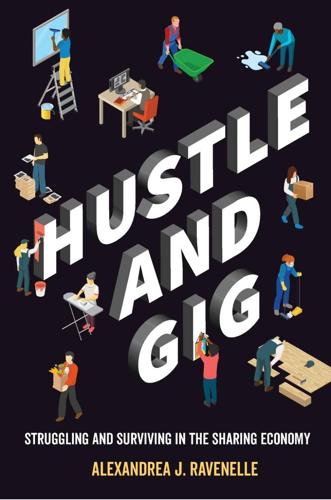
Hustle and Gig: Struggling and Surviving in the Sharing Economy
by
Alexandrea J. Ravenelle
Published 12 Mar 2019
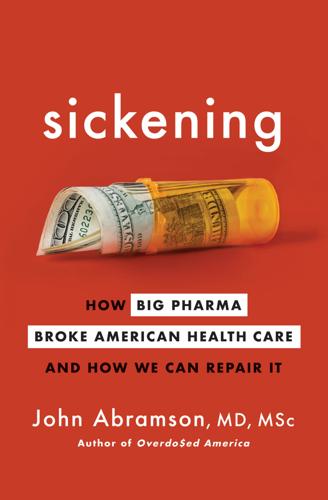
Sickening: How Big Pharma Broke American Health Care and How We Can Repair It
by
John Abramson
Published 15 Dec 2022
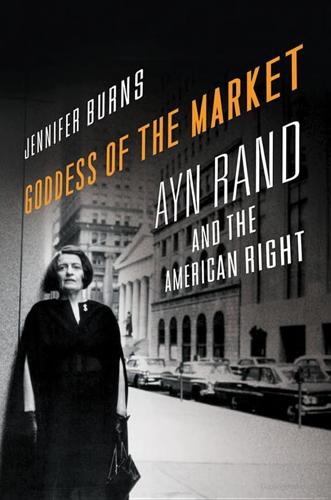
Goddess of the Market: Ayn Rand and the American Right
by
Jennifer Burns
Published 18 Oct 2009

The Rise and Fall of American Growth: The U.S. Standard of Living Since the Civil War (The Princeton Economic History of the Western World)
by
Robert J. Gordon
Published 12 Jan 2016
This is 12 percent less than the average value of the minimum wage in the 1960s, expressed in 2014 prices.4 Over the same 50 years, real compensation per hour rose by 115 percent, an indicator of how inadequate was the legislated real value of the minimum wage in keeping up with overall compensation.5 Standard economic theory implies that an increase in the minimum wage would raise the unemployment rate of the low-wage workers. However, a substantial body of economic research indicates little or no employment effect. The current economic situation of 2015–16 is a particularly appropriate time to raise the minimum wage, as the U.S. labor market currently has a record number of job openings and is creating low-skill jobs at a relatively rapid rate.

People, Power, and Profits: Progressive Capitalism for an Age of Discontent
by
Joseph E. Stiglitz
Published 22 Apr 2019
Tables and figures updated to 2017 and available on Emmanuel Saez’s website: https://eml.berkeley.edu/~saez/. 20.Table A-4 in the Census Bureau Income and Poverty Report, available at https://www.census.gov/content/dam/Census/library/publications/2017/demo/P60-259.pdf. 21.FRED economic data. It used to be thought that increasing minimum wages would inevitably lead to significant increases in unemployment. But since the path-breaking work of David Card and Alan B. Krueger (“Minimum Wages and Employment: A Case Study of the Fast-Food Industry in New Jersey and Pennsylvania,” American Economic Review 84, no. 4 [1994]: 772–93), there is a growing consensus that that is not the case, partly because of the prevalence of market power in labor markets (discussed in chapter 4).
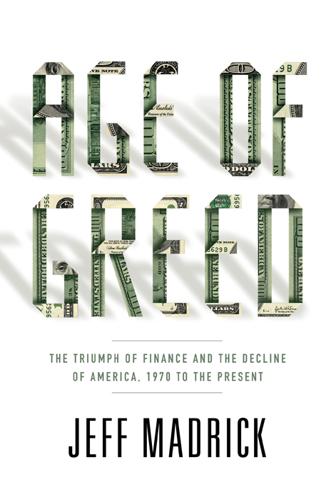
Age of Greed: The Triumph of Finance and the Decline of America, 1970 to the Present
by
Jeff Madrick
Published 11 Jun 2012

The Technology Trap: Capital, Labor, and Power in the Age of Automation
by
Carl Benedikt Frey
Published 17 Jun 2019
These letters include policy proposals by ordinary citizens that provide some insight into the concerns of the American public. Using a sample of eight hundred letters, Woirol recently classified a small percentage of their proposals.38 Most common were plans intended to increase consumer purchasing power through the implementation of minimum wages, price controls, government loans, pension or unemployment insurance programs, and direct job-creation plans. Other plans favored the expansion of public employment in work projects of various kinds. But some citizens also favored policies to stop job displacement forces: 5 percent of the letters argued for restrictions on labor-saving machinery.

Digital Empires: The Global Battle to Regulate Technology
by
Anu Bradford
Published 25 Sep 2023
By setting out the criteria that determine when the platform is considered an “employer,” the Directive is expected to lead to a significant reclassification of platform workers—such as Uber drivers—as employees.144 This would extend various labor and social rights to these workers that traditional employees are entitled to under the national laws of each EU member state. In practice, platform companies would be required to respect laws on minimum wage, collective bargaining, working time, unemployment, sickness benefits, and more.145 The Directive also calls for greater transparency in algorithmic management of platform workers, vesting workers with the right to contest automated decisions and mandating platforms to complement algorithms with human monitoring.146 This EU-level measure was, in part, motivated by the EU’s growing awareness of the inadequate employment protections available to platform workers.
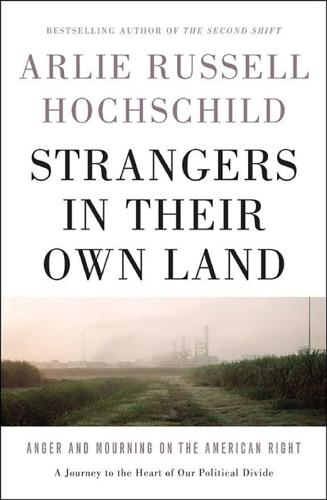
Strangers in Their Own Land: Anger and Mourning on the American Right
by
Arlie Russell Hochschild
Published 5 Sep 2016
This split has widened because the right has moved right, not because the left has moved left. Republican presidents Eisenhower, Nixon, and Ford all supported the Equal Rights Amendment. In 1960, the GOP platform embraced “free collective bargaining” between management and labor. Republicans boasted of “extending the minimum wage to several million more workers” and “strengthening the unemployment insurance system and extension of its benefits.” Under Dwight Eisenhower, top earners were taxed at 91 percent; in 2015, it was 40 percent. Planned Parenthood has come under serious attack from nearly all Republican presidential candidates running in 2016. Yet a founder of the organization was Peggy Goldwater, wife of the 1968 conservative Republican candidate for president Barry Goldwater.
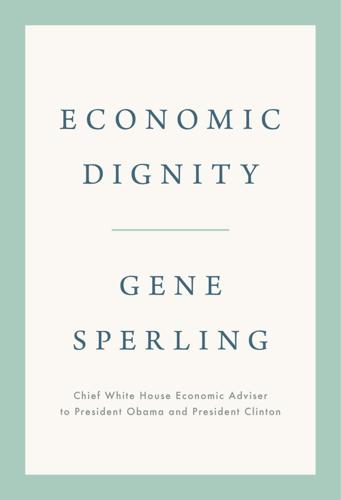
Economic Dignity
by
Gene Sperling
Published 14 Sep 2020
Steve Benen, “Rubio: People ‘Can’t Live’ on Minimum Wage, but No Increase,” MSNBC, October 15, 2015, http://www.msnbc.com/rachel-maddow-show/rubio-people-cant-live-minimum-wage-no-increase. Brooks writes, “So governments at every level should forget about increasing minimum wages—which is where the usual conservative argument ends. But they should also experiment with reducing minimum wages to help people trapped in long-term unemployment . . . For example, Michael Strain of the American Enterprise Institute has proposed that the federal government let employers hire long-term unemployed people at $4 per hour and then itself transfer an additional $4 per hour to each of these workers. Another promising idea is the expansion of an existing subsidy, the Earned Income Tax Credit, a refundable tax credit for low-income people who work.”
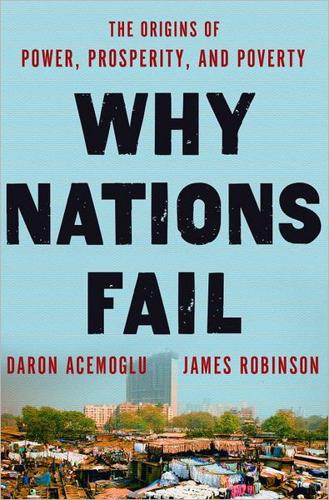
Why Nations Fail: The Origins of Power, Prosperity, and Poverty
by
Daron Acemoglu
and
James Robinson
Published 20 Mar 2012
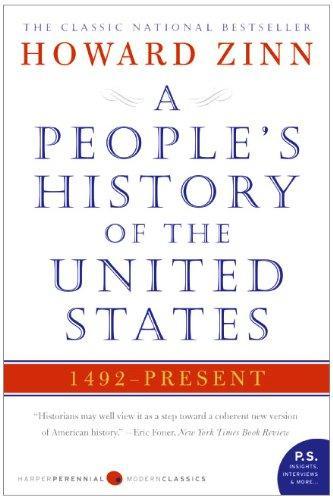
A People's History of the United States
by
Howard Zinn
Published 2 Jan 1977
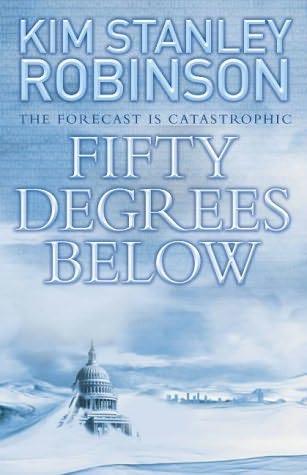
Fifty Degrees Below
by
Kim Stanley Robinson
Published 25 Oct 2005

The Fissured Workplace
by
David Weil
Published 17 Feb 2014
Other times, large businesses complied because they perceived that their scale made them particularly vulnerable to inspections, penalties, or public scrutiny.9 By shedding employment to other subordinate businesses, fissured employment altered those incentives. Lead businesses that, for example, shed janitorial and security work to contractors or franchised service providers no longer faced the responsibility for compliance with minimum wage or overtime standards, or even ensuring that payroll, unemployment, or workers’ compensation insurance taxes were being paid for those workers. Activities that are shed by lead organizations are often taken up by smaller businesses. Given the competitive markets in which they operate, smaller employers face intense pressure to reduce costs.

Not Working: Where Have All the Good Jobs Gone?
by
David G. Blanchflower
Published 12 Apr 2021

Capitalism and Its Critics: A History: From the Industrial Revolution to AI
by
John Cassidy
Published 12 May 2025

A Classless Society: Britain in the 1990s
by
Alwyn W. Turner
Published 4 Sep 2013

The Pursuit of Power: Europe, 1815-1914
by
Richard J. Evans
Published 31 Aug 2016
The war came on the heels of massive labour unrest, including the first national railwaymen’s strike in 1911, a dock strike in the same year, and a miners’ strike in south Wales in which troops opened fire on strikers at Tonypandy. The government seemed unable to control events. Suffragette outrages increased the general sense of chaos. The Liberals responded with a minimum wage for coalminers and a system of sickness and unemployment benefits in 1912, but these measures did not satisfy most workers. Trade union membership grew by 60 per cent between 1910 and 1914, and with it the influence of the Labour Party. Asquith’s attempt to pacify the forces of democracy with an extension of the franchise in 1912 foundered on the issue of women’s suffrage.